#Astronaut Search and Rescue Operations
Explore tagged Tumblr posts
Text
Joint Task Force Unites to Train for Astronaut Search and Rescue Operations
Maj. David Reifenberg, combat rescue officer drop zone controller, 308th Rescue Squadron, Patrick Space Force Base, Florida, free falls from a Joint Base Charleston C-17 Globemaster III, while Senoir Master Sgt. George Reed, paraescueman, 308 RQS prepares to jump, during a Human Space Flight Support airdop search and rescue exercise Jan 15, 2025, Patrick SFB, Fla. A joint task force of the 204th…
#SpaceCoast#astronaut rescue#Astronaut Search and Rescue Operations#crewed spaceflight#Patrick Space Force Base#Space Coast
0 notes
Note
do you think any of the ongoing troubles faced by the crew of the iss are going to have implications on international space law in the near-mid term?
what a great question! for those unaware, two astronauts are currently stranded on the ISS until at least early july due to technical failures in Boeing's return capsule.
while the astronauts are safe and sound and in no need of rescuing at the moment, the problem of astronauts in distress has actually been exhaustively been addressed by international space law and was even one of the first things lawmakers worried about. for example, the 1967 Outer Space Treaty (OST) states that:
States Parties to the Treaty shall regard astronauts as envoys of mankind in outer space and shall render to them all possible assistance in the event of accident, distress, or emergency landing on the territory of another State Party or on the high seas. [...] In carrying on activities in outer space and on celestial bodies, the astronauts of one State Party shall render all possible assistance to the astronauts of other States Parties. [...] (Article V OST)
keep in mind, this law was written in the sixties. the drafting of this provision was less about getting stuck on space stations and much more about the fear was much more that us or ussr astronauts would accidentally land on the wrong side of the iron curtain and be detained. but still the issue of astronauts in distress was taken incredibly seriously - so much so that the second space treaty, the aptly named 1969 Astronaut Rescue and Return Agreement (ARRA), focuses entirely on the issue, reiterating that:
If information is recieved or it is discovered that the personnel of a spacecraft have alighted* on the high seas or in my other place not under the jurisdiction of any State [i.e. outer space], those Contracting Parties which are in a position to do so shall, if necessary, extend assistance in search and rescue operations for such personnel to assure their speedy rescue. [...] (Art 3 ARRA)
what does that mean in practice? not much right now, as the astronauts are not in distress, they are simply delayed. you wouldn't call search and rescue on yourself when the train has a malfunction that makes it late either. but should a case of distress occur, and it is impossible to intervene on a national level by sending a falcon rocket up, it could be argued that the only other nation that has ratified the treaties and can currently easily and regularly access the international space station** - russia - could be obligated to provide assistance for their rescue. even though, while legally sound, i wouldn't want to touch that diplomatic baseball bat to a bee's nest if you held a gun to my head.
tldr; there are no implications for international space law as of yet*** as the situation is not severe, and if it became so, our beloved envoys of mankind would not be on their own. hopefully.
* we can fight about the word alighted an it's implications in this scenario but I don't have my cologne commentary on hand and I don't go into battle unarmed.
** China also has independent access to outer space and its own space station so it could in theory provide assistance but i have no idea if they can dock with the ISS or not.
*** the question if Boeing has to compensate for the damage incurred from the delay is also unanswered but as these are American astronauts and an Americans company that is national space law and therefore not my problem. #internationallawforever
67 notes
·
View notes
Text

New lunar distress system could safeguard future astronauts
A team of international scientists has taken a significant step towards making lunar exploration safer, proposing a distress monitoring and rescue system designed for the moon's unique and challenging environment.
As NASA's Artemis program aims to establish a long-term human presence on the moon, astronauts will be exposed to high-risk situations in remote areas like the lunar south pole.
A project led by the University of South Australia (UniSA), addresses the critical need for an emergency system capable of providing safety alerts, incident reporting, and location tracking of astronauts in distress.
Researchers from Adelaide and the US are designing a satellite constellation that prioritizes communication and geolocation on the moon's surface. Using this system, astronauts will be able to send distress signals to a network of satellites that will relay the information back to Earth or other lunar bases.
The system is based on the COSPAS-SARSAT technology already used for search and rescue on Earth, adapted for lunar conditions.
Dr. Mark Rice, a UniSA adjunct researcher and founder of Safety from Space, says the distress system could allow continuous communication with astronauts for up to 10 hours, even in the most challenging terrain, such as craters or mountains.
"Our team has also developed a waveform that supports low-power emergency beacons, ensuring that communication remains possible with minimal infrastructure and energy consumption," Dr. Rice says.
"This innovation is a critical advancement for space exploration. As humans venture further into space, the ability to quickly locate and rescue individuals in distress is vital. By creating a robust search and rescue system for the moon, this research sets the foundation for similar systems on other planets, potentially revolutionizing how we approach human safety in space exploration."
Closer to home, the technology—called Beagle—has been described as a "game changer" for two-way emergency communications when applied to Earth-based search and rescue operations. This would enhance emergency response efforts in remote and hazardous locations, potentially saving countless lives, the researchers say.
The work was presented to the International Communications and Satellite Systems conference.
2 notes
·
View notes
Text
MIT engineers help multirobot systems stay in the safety zone
New Post has been published on https://sunalei.org/news/mit-engineers-help-multirobot-systems-stay-in-the-safety-zone/
MIT engineers help multirobot systems stay in the safety zone
Drone shows are an increasingly popular form of large-scale light display. These shows incorporate hundreds to thousands of airborne bots, each programmed to fly in paths that together form intricate shapes and patterns across the sky. When they go as planned, drone shows can be spectacular. But when one or more drones malfunction, as has happened recently in Florida, New York, and elsewhere, they can be a serious hazard to spectators on the ground.
Drone show accidents highlight the challenges of maintaining safety in what engineers call “multiagent systems” — systems of multiple coordinated, collaborative, and computer-programmed agents, such as robots, drones, and self-driving cars.
Now, a team of MIT engineers has developed a training method for multiagent systems that can guarantee their safe operation in crowded environments. The researchers found that once the method is used to train a small number of agents, the safety margins and controls learned by those agents can automatically scale to any larger number of agents, in a way that ensures the safety of the system as a whole.
In real-world demonstrations, the team trained a small number of palm-sized drones to safely carry out different objectives, from simultaneously switching positions midflight to landing on designated moving vehicles on the ground. In simulations, the researchers showed that the same programs, trained on a few drones, could be copied and scaled up to thousands of drones, enabling a large system of agents to safely accomplish the same tasks.
A team of Crazyflie drones use MIT algorithm to safely switch positions while avoiding obstacles
Image: Courtesy of the researchers
Previous item Next item
“This could be a standard for any application that requires a team of agents, such as warehouse robots, search-and-rescue drones, and self-driving cars,” says Chuchu Fan, associate professor of aeronautics and astronautics at MIT. “This provides a shield, or safety filter, saying each agent can continue with their mission, and we’ll tell you how to be safe.”
Fan and her colleagues report on their new method in a study appearing this month in the journal IEEE Transactions on Robotics. The study’s co-authors are MIT graduate students Songyuan Zhang and Oswin So as well as former MIT postdoc Kunal Garg, who is now an assistant professor at Arizona State University.
Mall margins
When engineers design for safety in any multiagent system, they typically have to consider the potential paths of every single agent with respect to every other agent in the system. This pair-wise path-planning is a time-consuming and computationally expensive process. And even then, safety is not guaranteed.
“In a drone show, each drone is given a specific trajectory — a set of waypoints and a set of times — and then they essentially close their eyes and follow the plan,” says Zhang, the study’s lead author. “Since they only know where they have to be and at what time, if there are unexpected things that happen, they don’t know how to adapt.”
The MIT team looked instead to develop a method to train a small number of agents to maneuver safely, in a way that could efficiently scale to any number of agents in the system. And, rather than plan specific paths for individual agents, the method would enable agents to continually map their safety margins, or boundaries beyond which they might be unsafe. An agent could then take any number of paths to accomplish its task, as long as it stays within its safety margins.
In some sense, the team says the method is similar to how humans intuitively navigate their surroundings.
“Say you’re in a really crowded shopping mall,” So explains. “You don’t care about anyone beyond the people who are in your immediate neighborhood, like the 5 meters surrounding you, in terms of getting around safely and not bumping into anyone. Our work takes a similar local approach.”
Safety barrier
In their new study, the team presents their method, GCBF+, which stands for “Graph Control Barrier Function.” A barrier function is a mathematical term used in robotics that calculates a sort of safety barrier, or a boundary beyond which an agent has a high probability of being unsafe. For any given agent, this safety zone can change moment to moment, as the agent moves among other agents that are themselves moving within the system.
When designers calculate barrier functions for any one agent in a multiagent system, they typically have to take into account the potential paths and interactions with every other agent in the system. Instead, the MIT team’s method calculates the safety zones of just a handful of agents, in a way that is accurate enough to represent the dynamics of many more agents in the system.
“Then we can sort of copy-paste this barrier function for every single agent, and then suddenly we have a graph of safety zones that works for any number of agents in the system,” So says.
To calculate an agent’s barrier function, the team’s method first takes into account an agent’s “sensing radius,” or how much of the surroundings an agent can observe, depending on its sensor capabilities. Just as in the shopping mall analogy, the researchers assume that the agent only cares about the agents that are within its sensing radius, in terms of keeping safe and avoiding collisions with those agents.
Then, using computer models that capture an agent’s particular mechanical capabilities and limits, the team simulates a “controller,” or a set of instructions for how the agent and a handful of similar agents should move around. They then run simulations of multiple agents moving along certain trajectories, and record whether and how they collide or otherwise interact.
“Once we have these trajectories, we can compute some laws that we want to minimize, like say, how many safety violations we have in the current controller,” Zhang says. “Then we update the controller to be safer.”
In this way, a controller can be programmed into actual agents, which would enable them to continually map their safety zone based on any other agents they can sense in their immediate surroundings, and then move within that safety zone to accomplish their task.
“Our controller is reactive,” Fan says. “We don’t preplan a path beforehand. Our controller is constantly taking in information about where an agent is going, what is its velocity, how fast other drones are going. It’s using all this information to come up with a plan on the fly and it’s replanning every time. So, if the situation changes, it’s always able to adapt to stay safe.”
The team demonstrated GCBF+ on a system of eight Crazyflies — lightweight, palm-sized quadrotor drones that they tasked with flying and switching positions in midair. If the drones were to do so by taking the straightest path, they would surely collide. But after training with the team’s method, the drones were able to make real-time adjustments to maneuver around each other, keeping within their respective safety zones, to successfully switch positions on the fly.
In similar fashion, the team tasked the drones with flying around, then landing on specific Turtlebots — wheeled robots with shell-like tops. The Turtlebots drove continuously around in a large circle, and the Crazyflies were able to avoid colliding with each other as they made their landings.
“Using our framework, we only need to give the drones their destinations instead of the whole collision-free trajectory, and the drones can figure out how to arrive at their destinations without collision themselves,” says Fan, who envisions the method could be applied to any multiagent system to guarantee its safety, including collision avoidance systems in drone shows, warehouse robots, autonomous driving vehicles, and drone delivery systems.
This work was partly supported by the U.S. National Science Foundation, MIT Lincoln Laboratory under the Safety in Aerobatic Flight Regimes (SAFR) program, and the Defence Science and Technology Agency of Singapore.
0 notes
Link
Exploring the Moon poses significant risks, with its extreme environment and hazardous terrain presenting numerous challenges. In the event of a major accident, assistance might take days or even weeks to arrive. To address this, Australian researchers have created a distress alert system based upon the COSPAS-SARSAT technology used for Earth-based search and rescue operations. It relies on low-power emergency beacons that astronauts could activate with minimal setup and use a planned lunar satellite network for communication and rescue coordination. Fortunately I have never had to raise a distress call. I can imagine it though, somewhere remote, some sort of accident perhaps and need to summon assistance. Even on Earth, most mobile phone systems will be able to use a satellite signal to get a message out even if no cell signal. It’s not so easy on the Moon. Even communication is delayed by just over a second but if someone needs to come and help, then you are really in trouble. That’s what the team from Australia identified and have addressed in their paper published in October 2024. Aldrin on the Moon. Astronaut Buzz Aldrin walks on the surface of the moon near the leg of the lunar module Eagle during the Apollo 11 mission. Mission commander Neil Armstrong took this photograph with a 70mm lunar surface camera. While astronauts Armstrong and Aldrin explored the Sea of Tranquility region of the moon, astronaut Michael Collins remained with the command and service modules in lunar orbit. Image Credit: NASA As part of NASA’s Artemis program (which aims to create a sustained human presence on the Moon) astronauts will face significant dangers in isolated regions such as the lunar south pole. To address these challenges, researchers at the University of South Australia (UniSA) have been leading a project focused on developing an emergency response system. It’s designed to deliver critical safety warnings, enable incident reporting, and track the locations of astronauts that may be in trouble. NASA’s Space Launch System rocket carrying the Orion spacecraft launches on the Artemis I flight test, Wednesday, Nov. 16, 2022, from Launch Complex 39B at NASA’s Kennedy Space Center in Florida. Credit: NASA/Joel Kowsky. The Artemis program is the focus of returning humans to the Moon. If successful it will mark the first crewed lunar missions since the days of the Apollo missions. With a focus on exploration and scientific discovery, Artemis aims to land astronauts, including the first woman and the first person of colour, on the Moon’s surface in 2025. Scientists from Adelaide and the United States are collaborating to develop a satellite constellation – like those launched by SpaceX but on a smaller scale – dedicated to improving communication and navigation on the Moon. The system will allow astronauts to transmit emergency alerts to a network of satellites which will then forward the data to Earth or nearby lunar stations. Founder of Safety from Space and adjunct researcher Dr Mark Rice explains that the system can provide continuous communication with astronauts for up to 10 hours! Even if they are in mountainous or heavily cratered terrain, the system will perform well. The group Safety from Space was formed in 2018 and has been awarded $100,000 from the Government to help with lunar search and rescue (LSAR) initiatives. The trial aims to provide astronauts with a lighter, more reliable radio beacon with a much longer battery life. If successful, the solution could enable significant Australian contributions to the Artemis program. It could even help to improve emergency communications here on Earth, especially in areas where mobile phone signals are not reliable. Source : New lunar distress system could safeguard future astronauts The post How Could Astronauts Call for Help from the Moon? appeared first on Universe Today.
1 note
·
View note
Text
Tune in, Starliner! How NASA’s Near Space Network Powers Communications
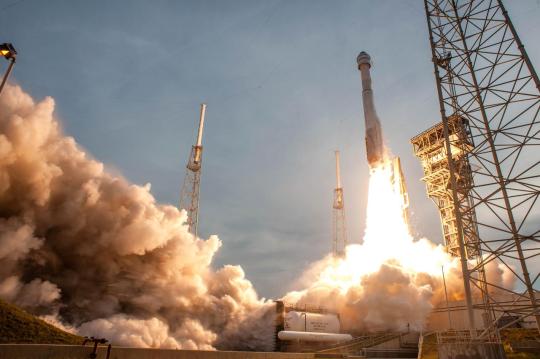
On May 19, 2022, our partners at Boeing launched their Starliner CST-100 spacecraft to the International Space Station as a part of our Commercial Crew Program. This latest test puts the company one step closer to joining the SpaceX Crew Dragon in ferrying astronauts to and from the orbiting laboratory. We livestreamed the launch and docking at the International Space Station, but how? Let’s look at the communications and navigation infrastructure that makes these missions possible.
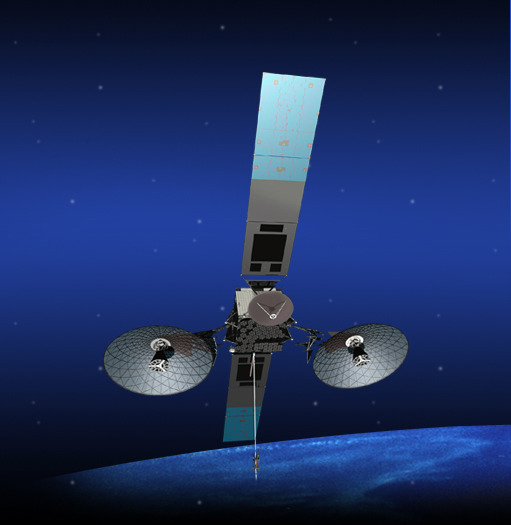
Primary voice and data communications are handled by our constellation of Tracking and Data Relay Satellites (TDRS), part of our Near Space Network. These spacecraft relay communications between the crewed vehicles and mission controllers across the country via terrestrial connections with TDRS ground stations in Las Cruces, New Mexico, and Guam, a U.S. territory in the Pacific Ocean.
TDRS, as the primary communications provider for the space station, is central to the services provided to Commercial Crew vehicles. All spacecraft visiting the orbiting laboratory need TDRS services to successfully complete their missions.
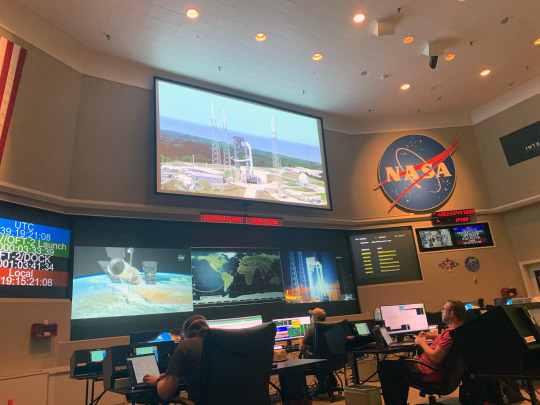
During launches, human spaceflight mission managers ensure that Commercial Crew missions receive all the TDRS services they need from the Near Space Operations Control Center at our Goddard Space Flight Center in Greenbelt, Maryland. There, communications engineers synthesize network components into comprehensive and seamless services for spacecraft as they launch, dock, undock, and deorbit from the space station.
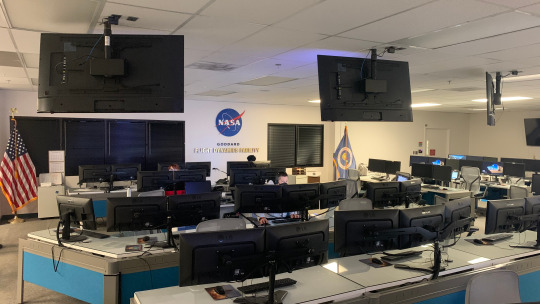
Nearby, at our Flight Dynamics Facility, navigation engineers track the spacecraft on their ascent, leveraging years of experience supporting the navigation needs of crewed missions. Using tracking data sent to our Johnson Space Center in Houston and relayed to Goddard, these engineers ensure astronaut safety throughout the vehicles’ journey to the space station.
youtube
Additionally, our Search and Rescue office monitors emergency beacons on Commercial Crew vehicles from their lab at Goddard. In the unlikely event of a launch abort, the international satellite-aided search and rescue network will be able to track and locate these beacons, helping rescue professionals to return the astronauts safely. For this specific uncrewed mission, the search and rescue system onboard the Boeing Starliner will not be activated until after landing for ground testing.
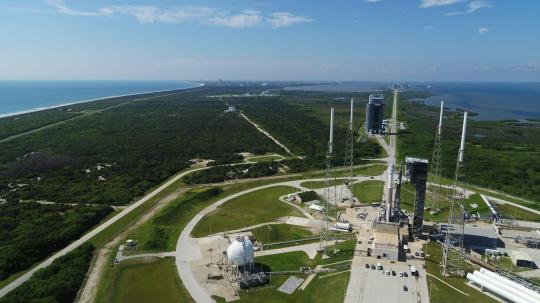
To learn more about NASA’s Space Communications and Navigation (SCaN) services and technologies, visit https://www.nasa.gov/directorates/heo/scan/index.html. To learn more about NASA’s Near Space Network, visit https://esc.gsfc.nasa.gov/projects/NSN.
Make sure to follow us on Tumblr for your regular dose of space!
566 notes
·
View notes
Text

U.S. Department of Defense designates the First Air Force as Space Air Forces
AFSPACE will plan, train and execute the rescue and recovery of astronauts during contingency operations.
Fernando Valduga By Fernando Valduga 05/19/22 - 09:00 AM in Espaço
Rescue men from various units around the country arrived at Patrick Air Base working with Detachment 3 to prepare for the returns of astronauts. (Photo: U.S. Space Force / Senior Aviator Dalton Williams)
The U.S. Department of Defense has officially designated the First Air Force as Space Air Forces (AFSPACE).
It will be the fifth service component of the U.S. Space Command (USSPACECOM), which reached initial operational capacity (IOC) on May 3.
With the successful IOC, AFSPACE will now provide defense air power to support USSPACECOM's various operations, from, inside and to space.
U.S. Space Command commander and U.S. Army General James Dickinson said: “As USSPACECOM continues to reach key milestones to achieve full operational capacity, AFSPACE's designation and the realignment of Human Space Flight Support activities under AFSPACE demonstrate the fast pace at which command and components are moving.
“AFSPACE has achieved initial operational capacity and, like USSPACECOM, is at a point where it can credibly state that it is organized and effective to employ lasting and flawless support functions for the joint force and civilian partners,” Dickinson adds.
Initially, the First Air Force was named as the air component of USSPACECOM by the chief of staff of the U.S. Air Force (USAF), General QC Brown, in February last year.

The milestone followed the establishment of an operational planning team by the commander-in-chief of the Air Combat Command (ACC), Mark Kelly.
In July last year, the operational command and control of the Human Space Flight Support (HSFS) mission were carried out by the First Air Force.
This mission is being carried out by Detachment 3 of the First Air Force, which is based at Patrick Space Force Base, Florida.
Det. 3, formerly commanded by Space Launch Delta 45, was realigned under the First Air Force during a reassignment and change of command ceremony held at the Cape Canaveral Space Force Station, Florida, also that day. Air Force Lieutenant General Kirk Pierce, commander of the First Air Force, U.S. NORAD Continental Region, AFNORTH and now AFSPACE, affirmed his team's commitment to USSPACECOM.
"Space-based capabilities allow virtually all elements of our national power, including diplomatic, information, military and economic," Pierce said. "It is an honor to support this larger picture with our actions on a personal level. This includes our new responsibility to plan, train and execute worldwide rescue and recovery of NASA astronauts during contingency operations.”
Human Space Flight Support operations are conducted by the Department of Defense when requested by NASA and validated by the Department of Defense. These operations include the search and rescue of contingency from NASA and NASA-sponsored astronauts.
Tags: AFSC - Air Force Space Command/U.S. Air Force Space CommandSpaceUSAF - United States Air Force / U.S. Air Force
Fernando Valduga
Aviation photographer and pilot since 1992, he has participated in several events and air operations, such as Cruzex, AirVenture, Dayton Airshow and FIDAE. He has works published in a specialized aviation magazine in Brazil and abroad. He uses Canon equipment during his photographic work in the world of aviation.
HOME Main Page Editorials Information Events Collaborate SPECIALS Advertise About
Cavok Brasil - Digital Tchê Web Creation
2 notes
·
View notes
Text
Worth the Purple
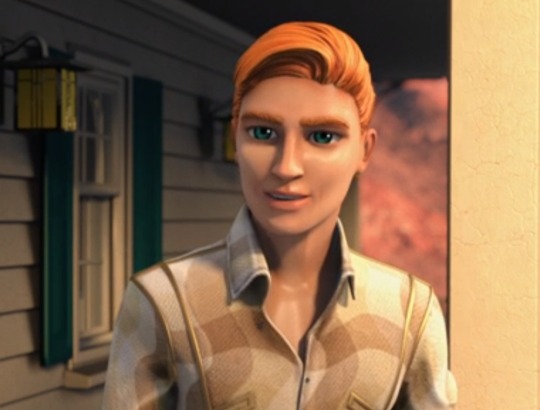
I’m just going to dump this here and walk away. Quality is questionable as I’ve been mostly asleep while writing it. Happy Birfday, Johnny. Sorry it is a day late, I can only sleep type so much, eventually the brain collapses and refuses to function.
I hope you enjoy this anyway.
-o-o-o-
It was late and the sun had long gone down. The villa was quiet. Scott had wandered off to bed early. It had only taken a glare from Virgil to instigate his movement.
The words he had with his eldest brother earlier in the day were obviously taken to heart. Either that or the threat of calling in Grandma if he didn’t get himself some decent sleep had the effect Virgil desired. It didn’t really matter as long as Scott managed some shuteye.
His eldest brother needed management otherwise he’d work himself into an early grave.
Gordon had used his leverage as the injured brother to corner Alan into watching Buddy and Ellie with him after dinner.
Virgil attended to the situation before it became explosive.
Alan was ushered off with a video game and a plead from Virgil to go take a shower before his clothes gained sentience.
Alan’s remarked that John’s discarded trash gained sentience and it had worked well for his brother so, it might not be a bad thing.
The fact the video game in his hand let out a god-awful squawk and died after that statement was probably something Virgil, or at least John should investigate, but as it would probably teach Alan a valuable lesson in keeping his mouth shut, Virgil was willing to let it go for a little while at least.
He doubted Eos would do too much serious damage.
Gordon still had his feet up in their home theatre stuffing his face with popcorn and cheesewhiz.
Consequently, there were large portions of both all over the floor, the seat, his fish brother’s clothing, and the sling wrapped around his left arm.
A comment on Virgil’s behalf about vermin attracting vermin was received with a snort.
Gordon’s distracted answer was that there were no rats on Tracy Island and for the other creatures available, he was helping to keep the ecosystem running.
Virgil commented that he was pretty sure his brother might be capable of encouraging new types of mould.
Gordon told him to go be tidy somewhere else where he wasn’t interrupting a search for the giant cyclops.
Virgil rolled his eyes, checked his brother’s bandages and his vitals -mostly just to annoy him - and left him to it. After all, he had better things to do than tackle lost causes.
He ran into Grandma in the hallway and they swapped family reconnaissance. He knew Kayo was in Brazil for the night, but he hadn’t seen Brains for most of the day. Grandma reported that he had been fed and watered and had possibly developed a new polymer that could be used in the scuff pads on their uniform to help prevent what happened to Gordon from happening again.
It was no surprise. When technology failed, Brains got angry and solutions were the result.
Sometimes several.
Hell, that was how his exosuit was born.
Brains had been so angry that by the time Virgil made it out of hospital, there were five exosuits ready for testing.
Brains saw mechanical failure as personal failure and acted accordingly.
Gordon’s injury was small on the Tracy Scale, but the thirteen stitches in his arm were enough to ignite the genius engineer into a minor inventing fury at least.
Grandma’s hand on his arm squeezed just gently before she drew Virgil into a hug goodnight. He returned her embrace, as always so surprised at just how small his grandmother was, yet so strong.
Letting her go, he headed down to the comms room to chase up the one remaining human occupant of the Island.
John had been missing all evening and while that wasn’t unusual, Virgil felt the need to check on him before bed…otherwise he would be left wondering.
Wondering was never good for sleep.
He had his suspicions of where his star brother might be, so when he found the comms room empty, he wasn’t surprised. A step out onto the balcony and the second most likely place to find John also proved fruitless as the pool glistened in the starlight amongst the empty loungers.
Virgil looked up at the sky. It was a still night. Only the ocean lapping against the Island interrupted the silence. There was no breeze, no rustling of palm or pokey trees. The occasional bat chattered and a disturbed bird muttered, but it was eerily still for their exposed position in the middle of the Pacific Ocean.
But the stars told him where to find his brother.
-o-o-o-
It was ever so silent as he made his way up the side of Tracy Peak. The steps he and John had carved into the volcanic rock did their job beautifully, though Virgil would admit that there was no way he would want to do this in bare feet.
That and it was dark despite the subdued lighting. He shone a hand-held torch on the stairs and tried not to kill himself on the steep climb.
He had begged his brother to light the steep ascent, and it had taken some persuasion even to allow the dim red lights that barely outlined the way. Light pollution was a thing and John was a little protective of his midnight vista.
Virgil always made a point of carrying his own torch for a touch of extra safety. After all, it would be really stupid for one of the famed Thunderbirds to kill themselves tripping on stairs in the dark.
As he neared the top of the steps, he lowered his light and shielded it as to not to betray his approach. It was likely John already knew he was there, but there was no reason to disturb his night vision more than necessary.
The observatory was little more than a rock platform high up on Tracy Peak. It sat at a natural lookout point and during the day you could see for miles.
At night it was just shadows and starlit ocean.
It was a good, few metres across and they had used some of the stone they had carved out of the mountainside for the stairs to build a balustrade around the platform’s edge and put in some very basic seating.
John had since added to it with a weatherproof cabinet and storage space for one of his telescopes and there was some technology up here as well.
But they had never built a shelter. John preferred to keep the sky as open as possible and be able to see as much as he could.
And tonight was just spectacular.
Virgil stood a few steps down and killed off his torch, allowing his eyes to adjust fully.
John was talking.
“How many times do I have to tell you to not listen to Gordon?”
“It would help if you hadn’t told me an equal amount of times that I should listen to Gordon. I do believe one of your threats was to ‘swap my processors with a pocket calculator’.” Eos’ voice issued from John’s tablet most perturbed.
His brother sighed. “It is situational. You know that. Gordon acting as an International Rescue operative is far distant from Gordon acting as the brother from hell.”
“And how am I to decipher the difference?”
“The bottle of purple dye and the fact he was requesting entrance to my personal quarters rather than docking with Thunderbird Five should have been a clue.”
“I fail to see how I could possibly have predicted the use of the dioxazine.”
“Then hopefully you have learnt from my suffering.”
“Noted.” There was a pause and Virgil opened his mouth to interrupt. “Should I electrocute Virgil who is currently on approach?”
“What?! No!”
John spun in the shadows and the sparkle of his eyes sought him out in the dark. “Virgil?”
Virgil bit his lip and unshielded his torch a little. “Parenting troubles?”
“Brotherly troubles. An injured and bored Gordon is a menace.”
“You mentioned dye? Shower rose?”
John’s grunt was the only confirmation he needed.
Virgil considered himself to be a nice guy and really, other than revenge, he would never suffer a brother the curse of dye in their shower rose. But he was still a brother and as a brother, a loving brother at that, he couldn’t help but raise the torch in his hand a little to illuminate his younger sibling.
John squirmed under the bright light and Virgil only flashed it up long enough to catch a glimpse of the purple patchwork of his little brother’s hair.
He had to bite back hard not to burst out laughing. The almost pyrrole orange of John’s hair actually worked quite well with the vivid purple streaks all through it.
Once Gordon was recovered all hell was going to break loose.
It was never wise to piss off John.
“Did he give you a reason why?”
“Did you have to do that?” The astronaut rubbed his eyes.
“Yes.”
Well, he wasn’t going to lie.
John huffed. “Does he need a reason?”
“No, I suppose not.” A sigh. “You got a plan?”
“Not one I’m willing to tell anyone.”
“You don’t trust me?”
John snorted. “It is situational.”
“Gee, thanks.” Though John did have a point. He let out a sigh and killed off the torch. “Do me a favour and wait until I’m off the Island. Better yet wait until Scott is away as well. He doesn’t need it and I don’t want to listen to it.”
“FAB.”
There was definitely a smirk in that voice.
But Virgil hadn’t come up here to plot revenge on the Fish. He had come up here to check on his space brother who had kindly come down from on high to assist while Gordon was off rota.
Virgil straightened and settled his shoulders. “How are you, John?”
“Apart from purple spotted?”
“Apart from purple spotted.”
“I’m good.” John took a step away and looked out over the ocean so far down below. “Settling in. It’s a good opportunity to refresh a few skills I haven’t used in a while.” He looked over at Virgil. “And I’m getting to spend some quality time with you guys.”
A snort. “And paying the price.”
“And paying the price.” He looked back over the water again and Virgil followed his gaze. The night was moonless at the moment and, in the middle of the Pacific, the sky was an ocean of stars.
“Spotting some old favourites?” Virgil knew his brother could see far more from Five than he ever could here, but there was something special about this place.
“Yeah. Eos had some questions and I wanted to show her the difference between space-based star study and Earth-based star gazing.”
“A little daddy-daughter time?” That earned him an exasperated grunt.
“You could put it that way.” But his brother sighed. “I’m not sure I’m communicating the entire concept.”
“You said it felt like home.” Eos’ voice was tentative.
Virgil blinked.
“I did.”
“But home is on Thunderbird Five.”
John turned to look at Virgil. “Yes and no.”
“That is not a viable response. Further explanation is required.”
“Home is where the heart is.”
“Are you intending that anatomically or metaphorically?”
“The latter. My home is where my loved ones are. Which is why my home is both here and on Thunderbird Five.”
“You love the stars?”
“I love my family.”
Virgil was staring at his brother. John’s expression was somewhat hidden in the darkness, but the emotion in his words was clear.
There was a pause before Eos replied. “So that would make Thunderbird Five your family’s home as well when you are aboard.”
“Partially, perhaps. Though they would have less attachment to the station than I do.”
“Less attachment to me?”
“No, you are not Thunderbird Five.”
“Then Thunderbird Five is my home.”
“Yes.”
“But only when you are here.”
Virgil found himself holding his breath.
“That depends on your feelings, Eos.” John’s voice was quiet.
There was silence after that. The AI left them hanging. Whether it was from indecision on her part or a decision she didn’t want to or hadn’t thought to share.
“She is amazing.” The words slipped from Virgil’s mouth without thought. Perhaps it was the setting with the world beneath and the universe above. Perhaps it was just hearing a simple truth uttered by his usually very private brother.
Or maybe it was just the distance that usually separated John from Virgil that made sharing a moment like this so difficult.
“Yes, she is.” It was almost whispered, but Virgil could hear the smile behind it.
He reached out and wrapped his fingers around his brother’s bicep. “It’s good to have you down with us, John.”
“I’m happy to be here.” A grunt. “Despite the gravity.”
“Worth the purple?”
It was almost a reluctant whine. “Worth the purple.”
Virgil grinned and squeezed his brother’s arm. Gordon was walking toast.
“Are you going to be long?”
That earned him a glare. “I can stay up past my bedtime.”
“Hey, I’m just concerned for your health. You don’t want to push it. You’ve only been down a few days.”
“I know the procedure, Virgil.”
“I’m just saying. Better me than Grandma.”
That earned him another grunt. “You may have a point.”
“I know I have a point, so don’t stay up here too long.”
John opened his mouth, but he paused and shut it again before turning away and walking over to the telescope that had been ignored the entire time Virgil had been up here.
“I’ll be down shortly.” It was said begrudgingly.
Virgil took his cue and aiming his torch at the stairs, flicked it on and started heading down.
“John?” Eos whispered his brother’s name.
“Yes, Eos?”
“Am I worth the purple?”
Virgil kept making his way down the stairs and he didn’t hear his brother’s response.
But he smiled anyway.
-o-o-o-
FIN.
52 notes
·
View notes
Photo

A hundred years into the future, humanity has colonised the solar system, but all the habitats and space stations are still dependent on regular resupply from Earth. The Fleet operates several search and rescue ships which ply the space lanes on a regular schedule to lend assistance to the vast space freighters without which the colonies are cut off. Captain Elissa Shann and her crew of twenty-five man the Khidr, inbound to Phobos when they pick up a distress signal from the freighter Hercules.
Things turn critical even before they arrive at the rendezvous with the freighter, with a crew member murdered. Uneasy with the knowledge she has a killer aboard, Shann is unprepared to be attacked by a ship nobody on the Khidr had any idea was present - a ship that doesn’t exist on any spaceship register, something that’s not supposed to be possible. Nobody has ever even fought a battle in space; the Khidr’s laser and torpedoes are meant for fending off stray asteroids, not attacking ships! But Shann’s no quitter. Born without legs, she went into space because zero-g meant her disability actually became an asset. She’s getting out alive, and she’s bringing as many of her people with her as she can. No matter what it takes.
There are a lot of threads here that don’t get tied off, starting from the mystery of the strange sounds heard by Apollo 10 astronauts back in the early days of space exploration. Shann and her crew find - and have to abandon - several artifacts they can’t identify, and there are at least two players on the board whose backers are unidentified, so there’s a much bigger game at play they don’t fully understand. Yes, there’s a fairly satisfying ending given here with Shann and (a few of) her crew winning the day and headed for safety (content warnings for lots of deaths, some fairly gruesome, and serious injuries). It does seem obvious that this is the first of a series; to me it has echoes of David Weber’s fabulous Honor Harrington series. I’m not sure if it will go that long, but there’s at least a trilogy here, and I’d love to read more of it.
Shann as a heroine with a disability who is absolutely not defined by it - at one point it even works for her because she requires less oxygen than other crewmembers who have complete bodies to fuel - is really great to read. She’s also not the only one; talented, ambitious young office Johansson is missing a hand, though she uses a prosthetic. Shann uses prosthetic legs under sufferance and avoids gravity unless she must.
The story is told in first person and primarily in Shann’s head, though we also get to see the perspective of others at different times, which helps to make the crew feel ‘real’ and not just a bunch of redshirts. April Johansson is brilliant and fiercely ambitious, at the beginning thinking only of how to impress her captain, her eyes always on climbing the Fleet rank ladder, but by the end, she is ready to sacrifice herself to give the rest of the crew a chance at survival. Engineer Sellis is a likable enough sort, a skilled repair technician… with a serious gambling problem and debts across the solar system which leave him vulnerable to blackmail.
While there’s a mystery to solve and an unexpected battle to fight, it’s the characters who make this story so intriguing, led by Shann. I thought she was a fascinating heroine and I ended the book really wanting to know how things turned out for her, wondering what reception she’d get from Fleet. A well-written page-turner, the fact that I’d have happily gone straight out and bought the second book in the series if it was available mean this deserves nothing less than five stars.

Fearless is available now.
Disclaimer: I received a review copy of this title via NetGalley.
20 notes
·
View notes
Text
The Best Movies on Netflix in India [February 2020]

In its efforts to win Oscars and please its 167 million members, Netflix has been pouring billions into movies recently, including projects from or featuring the likes of Dwayne Johnson, Martin Scorsese, and Michael Bay. One of those — The Irishman — racked up 10 nominations for the streaming service at the 2020 Oscars, though it failed to come away with a single prize. Netflix has also expanded its film efforts in India in the past year, announcing projects from the likes of Shah Rukh Khan and Karan Johar. For now though, the strength of its catalogue is still the acquisitions. With over 3,500 movies, Netflix offers more choices than any other platform in India. To pick the best movies on Netflix, we relied on Rotten Tomatoes, Metacritic, and IMDb ratings to create a shortlist. The last of them was preferred for Indian films given the shortfalls of reviews aggregators in that department. Additionally, we used our own editorial judgement to add or remove a few. This list will be updated once every few months if there are any worthy additions or if some movies are removed from the service, so bookmark this page and keep checking in. Here are the best films currently available on Netflix in India, sorted alphabetically. 12 Monkeys (1995) Inspired by the 1962 French short La Jetée, a prisoner (Bruce Willis) is sent back in time to learn more about the virus that wiped out nearly all of humanity. Terry Gilliam directs. 12 Years A Slave (2013) Duped into slavery on the account of a job, Steve McQueen's adaptation of a free New York black man's (Chiwetel Ejiofor) 19th-century memoir is an incredible true story, and an important watch. 2001: A Space Odyssey (1968) In Stanley Kubrick's highly-influential sci-fi film, humanity charts a course for Jupiter with the sentient computer HAL 9000, to understand the discovery of a black monolith affecting human evolution. It's less plot, and more a visual and aural experience.
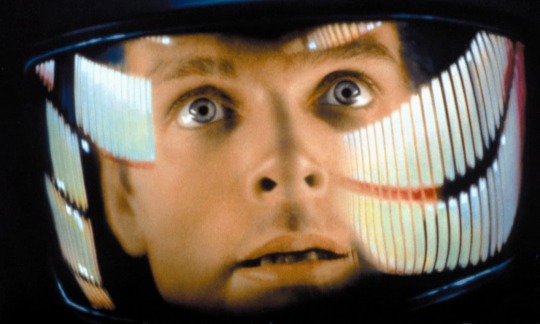
3 Idiots (2009) In this satire of the Indian education system's social pressures, two friends recount their college days and how their third long-lost musketeer (Aamir Khan) inspired them to think creatively and independently in a heavily-conformist world. Co-written and directed by Rajkumar Hirani, who stands accused in the #MeToo movement. 50/50 (2011) Inspired by a true story, a 27-year-old radio journalist (Joseph Gordon-Levitt) is diagnosed with spinal cancer and learns the value of friendship and love as he battles the rare disease. Aamir (2008) Adapted from the 2006 Filipino film Cavite, a young Muslim NRI doctor (Rajeev Khandelwal) returning from the UK to India is forced to comply with terrorists' demands to carry out a bombing in Mumbai after they threaten his family. American History X (1998) In a film that's more relevant today than when it was made, a neo-Nazi white supremacist (Edward Norton), who served three years in prison for voluntary manslaughter, tries to prevent his younger brother from going down the same path. American Hustle (2013) In the late 1970s, two con artists (Christian Bale and Amy Adams) are forced to work for an FBI agent (Bradley Cooper) and set up a sting operation that plans to bring down several corrupt politicians and members of the Mafia. Jennifer Lawrence, Jeremy Renner star alongside. Andaz Apna Apna (1994) Two slackers (Aamir Khan and Salman Khan) who belong to middle-class families vie for the affections of an heiress, and inadvertently become her protectors from a local gangster in Rajkumar Santoshi's cult comedy favourite. Andhadhun (2018) Inspired by the French short film L'Accordeur, this black comedy thriller is the story of a piano player (Ayushman Khurrana) who pretends to be visually-impaired and is caught in a web of twists and lies after he walks into a murder scene. Tabu, Radhika Apte star alongside. Apollo 13 (1995) Ron Howard dramatises the aborted Apollo 13 mission that put the astronauts in jeopardy after an on-board explosion ate up all the oxygen and forced NASA to abort and get the men home safely. Argo (2012) Ben Affleck directs and stars in this film about a CIA agent posing as a Hollywood producer scouting for location in Iran, in order to rescue six Americans during the US hostage crisis of 1979. Article 15 (2019) Ayushmann Khurrana plays a cop in this exploration of casteism, religious discrimination, and the current socio-political situation in India, which tracks a missing persons' case involving three teenage girls of a small village. A hard-hitting, well-made movie, though ironically, it was criticised for being casteist itself, and providing an outsider's perspective. The Avengers (2012) Earth's mightiest heroes — including Iron Man, Captain America, Thor, and the Hulk — come together in this groundbreaking Marvel team-up from writer-director Joss Whedon to stop Thor's adopted brother Loki (Tom Hiddleston) and his alien army from subjugating mankind.

The Aviator (2004) With Leonardo DiCaprio as Howard Hughes and Cate Blanchett as Katharine Hepburn, Martin Scorsese dives into the life of the aviation pioneer and film producer, who grapples with severe OCD while his fame grows. Awakenings (1990) Robin Williams and Robert De Niro lead the cast of this drama based on a 1973 memoir of the same name, about a doctor (Williams) who discovers the beneficial effects of a drug on catatonic patients, thereby gifting them a new lease on life. Barfi! (2012) Set in the 1970s amidst the hills of Darjeeling, writer-director Anurag Basu tells the tale of three people (Ranbir Kapoor, Priyanka Chopra, and Ileana D'Cruz) as they learn to love while battling the notions held by society. Beasts of No Nation (2015) With civil war raging across a fictional African nation, this Netflix Original focuses on a young boy who's trained as a child soldier by a fierce warlord (Idris Elba), and the effects it has on him. Before Sunrise (1995) In the first chapter of Richard Linklater's long-drawn-out trilogy, two idealistic twentysomethings, an American man (Ethan Hawke) and a French woman (Julie Delpy), spend the night together walking around in the Austrian capital of Vienna. The Big Lebowski (1998) A guy known as The Dude (Jeff Bridges) seeks payback for his ruined carpet after he's mistaken for a millionaire with the same name in this crime comedy from the Coen brothers. Less about the plot and more about a way of living. The Big Short (2015) Starring Christian Bale, Steve Carell, Ryan Gosling and Brad Pitt, a look at Wall Street's penchant for self-profit in a vicious loop that caused the 2007–08 global financial meltdown. Birdman (2014) Alejandro G. Iñárritu won three Oscars including Best Picture for this tale of a washed-up superhero actor (Michael Keaton) who struggles to revive his career with a Broadway play. Known for appearing as if it was shot in a single take, it also starred Edward Norton, Zach Galifianakis, and Emma Stone. Blade Runner (1982) One of the most influential cyberpunk films ever made is about a burnt-out cop (Harrison Ford) who reluctantly agrees to hunt down a group of fugitive “replicants”, synthetic humans with a limited life-span who aren't allowed to live on Earth. Blue Valentine (2010) Ryan Gosling and Michelle Williams lead this drama that shifts between time periods to depict a couple's courtship and how their marriage fell apart. Das Boot (1981) One of the most authentic war movies ever made chronicles the life of a German submarine crew during World War II, as they go through long stretches of boredom and periods of intense conflict, while trying to maintain morale in a capsule 10 feet by 150 feet hundreds of metres under the surface. The Bourne trilogy (2002-07) Technically not a trilogy, but the first three chapters — Identity, Supremacy, and Ultimatum — starring Matt Damon in the lead as the titular CIA assassin suffering from amnesia were so good that they changed the longest-running spy franchise of all-time: James Bond.

The Breadwinner (2017) This animated film follows a 11-year-old girl living under Taliban rule in Afghanistan, who disguises herself as a boy to provide for her family after the father is taken away without reason. Uses wonderfully-drawn vignettes to stress on the importance of storytelling. Bulbul Can Sing (2019) Three teenagers battle patriarchy and the moral police as they explore their sexual identities in Rima Das's National Award-winning drama — and pay for it dearly. Das writes, directs, shoots, edits, and handles costumes. C/o Kancharapalem (2018) Set in the eponymous Andhra Pradesh town, this Telugu film spans four love stories across religion, caste, and age — from a schoolboy to a middle-aged unmarried man. A debut for writer-director Venkatesh Maha, featuing a cast mostly made up of non-professional actors. Capernaum (2018) In the award-winning, highest-grossing Arabic film of all time, a 12-year-old from the slums of Beirut recounts his life leading up to a five-year sentence he's handed for stabbing someone, and in turn, his decision to sue his parents for child neglect. Captain Phillips (2013) The true story of a Somali pirate hijacking of a US cargo ship and its captain (Tom Hanks) being taken hostage, which spawns a rescue effort from the US Navy. The Bourne Ultimatum's Paul Greengrass directs. Cast Away (2000) After his plane crash-lands in the Pacific, a FedEx employee (Tom Hanks) wakes up on a deserted island and must use everything at his disposal and transform himself physically to survive living alone. Castle in the Sky (1986) In the first film officially under the Studio Ghibli banner, a young boy and a girl protect a magic crystal from pirates and military agents, while on the search for a legendary floating castle. Hayao Miyazaki writes and directs. Chupke Chupke (1975) Hrishikesh Mukherjee's remake of the Bengali film Chhadmabeshi, in which a newly-wedded husband (Dharmendra) decides to play pranks on his wife's (Sharmila Tagore) supposedly smart brother-in-law. Amitabh and Jaya Bachchan also star. A Clockwork Orange (1971) Set in a near-future dystopian Britain, writer-director Stanley Kubrick adapts Anthony Burgess' novel of the same name, commenting on juvenile delinquency through the eyes of a small gang leader who enjoys "a bit of the old ultra-violence". Close Encounters of the Third Kind (1977) Steven Spielberg's slow-paced sci-fi pic — which spent several years in development, being rewritten over and over — is about an everyday blue-collar guy (Richard Dreyfuss) whose humdrum life turns upside down after an encounter with an unidentified flying object (UFO).

Cold War (2018) Jumping either side of the Iron Curtain through the late 1940s to the 1960s, Oscar-winner Paweł Pawlikowski depicts the story of two star-crossed lovers, as they deal with Stalinism, rejection, jealousy, change, time — and their own temperaments. Company (2002) Inspired the real-life relationship between Dawood Ibrahim and Chhota Rajan, director Ram Gopal Varma offers a look at how a henchman (Vivek Oberoi) climbs up the mobster ladder and befriends the boss (Ajay Devgn), before they fall out. Dallas Buyers Club (2013) Refusing to accept a death sentence from his doctor after being diagnosed with AIDS in the 1980s, the true story of an electrician and hustler (Matthew McConaughey) who smuggles banned medications from abroad. Dangal (2016) The extraordinary true story of amateur wrestler Mahavir Singh Phogat (Aamir Khan) who trains his two daughters to become India's first world-class female wrestlers, who went on to win gold medals at the Commonwealth Games. The Dark Knight (2008) In the second part of Christopher Nolan's Dark Knight trilogy, regarded as the greatest comic book movie ever, Batman (Christian Bale) faces a villain, the Joker (Heath Ledger), he doesn't understand, and must go through hell to save Gotham and its people. Dev.D (2009) Anurag Kashyap offers a modern-day reimagining of Sarat Chandra Chattopadhyay's Bengali romance classic Devdas, in which a man (Abhay Deol), having broken up with his childhood sweetheart, finds refuge in alcohol and drugs, before falling for a prostitute (Kalki Koechlin). Dheepan (2015) Winner of Cannes' top prize, three Sri Lankan refugees — including a Tamil Tiger soldier — pretend to be a family to gain asylum in France, where they soon realise that life isn't very different in the rough neighbourhoods. Dil Chahta Hai (2001) Farhan Akhtar's directorial debut about three inseparable childhood friends whose wildly different approach to relationships creates a strain on their friendship remains a cult favourite. Aamir Khan, Saif Ali Khan, and Preity Zinta star. Django Unchained (2012) Written and directed by Quentin Tarantino, a German bounty hunter (Christoph Waltz) helps a freed slave (Jamie Foxx) rescue his wife from a charming but cruel plantation owner (Leonardo DiCaprio). Drive (2011) A stuntman moonlighting as a getaway driver (Ryan Gosling) grows fond of his neighbour and her young son, and then takes part in a botched heist to protect them from the debt-ridden husband.
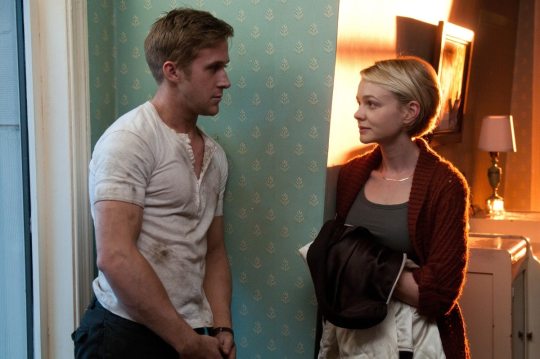
Dunkirk (2017) Christopher Nolan's first historical war movie chronicles the evacuation of Allied soldiers from the French beaches of Dunkirk in World War II, using his love for non-linear storytelling by depicting three fronts — land, sea, and air — in time-shifted ways. The Edge of Seventeen (2016) In this coming-of-age comedy, the life of an awkward young woman (Hailee Steinfeld) gets more complex after her older brother starts dating her best friend, though she finds solace in an unexpected friendship and a teacher-slash-mentor (Woody Harrelson). End of Watch (2012) Before he made a terrible sci-fi remake of his own film, writer-director David Ayer took a near-documentarian lens to the day-to-day police work of two partners (Jake Gyllenhaal and Michael Peña) in South Los Angeles, involving their friendship and dealings with criminal elements. Eternal Sunshine of the Spotless Mind (2004) An estranged couple (Jim Carrey and Kate Winslet) begin a new relationship unaware they dated previously, having erased each other from their memories, in what stands as writer Charlie Kaufman's defining work. The Exorcist (1973) One of the greatest horror films of all time, that has left a lasting influence on the genre and beyond, is about the demonic possession of a 12-year-old girl and her mother's attempts to save her with the help of two priests who perform exorcisms. The Florida Project (2017) Set in the shadow of Disney World, a precocious six-year-old girl (Brooklynn Prince) makes the most of her summer with her ragtag playmates, while her rebellious mother tries to make ends meet with the spectre of homelessness always hanging over them. Willem Dafoe stars alongside. Ferris Bueller's Day Off (1986) In John Hughes' now-classic teen picture, a high schooler fakes being sick to spend the day with his girlfriend and his best friend, while his principal is determined to spy on him. Fruitvale Station (2013) Black Panther writer-director Ryan Coogler's first feature offered a look at the real-life events of a young California man's (Michael B. Jordan) death in a police shooting in 2008. Winner of two awards at Sundance Film Festival. Full Metal Jacket (1987) Stanley Kubrick follows a US marine nicknamed Joker from his days as a new recruit under the command of a ruthless sergeant, to his posting as a war correspondent in South Vietnam, while observing the effects of the war on his fellow soldiers.
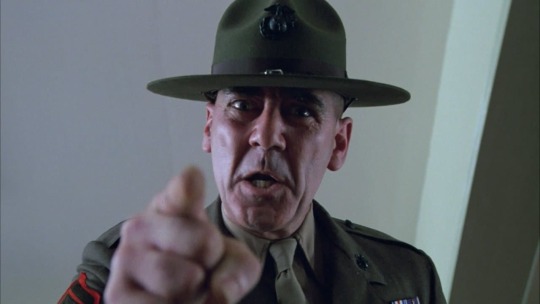
Ghostbusters (1984) A bunch of eccentric paranormal enthusiasts start a ghost-catching business in New York, and then stumble upon a plot to wreak havoc by summoning ghosts. Gave birth to one of the most iconic song lyrics in history. Gol Maal (1979) A chartered accountant (Amol Palekar), with a knack for singing and acting, falls deep down the rabbit hole after lying to his boss that he has a twin, in this Hrishikesh Mukherjee comedy. Gone Girl (2014) Based on Gillian Flynn's best-selling novel and directed by David Fincher, a confounded husband (Ben Affleck) becomes the primary suspect in the sudden mystery disappearance of his wife (Rosamund Pike). GoodFellas (1990) Considered as one of the best gangster films of all time, it brought Martin Scorsese and Robert De Niro together for the sixth time. Based on Nicholas Pilegg's 1985 non-fiction book Wiseguy, it tells the rise and fall story of mob associate Henry Hill, his friends and family between 1955 and 1980. Gravity (2013) Two US astronauts, a first-timer (Sandra Bullock) and another on his final mission (George Clooney), are stranded in space after their shuttle is destroyed, and then must battle debris and challenging conditions to return home. Guardians of the Galaxy (2014) A bunch of intergalactic misfits, which includes a talking racoon and tree, come together to form a ragtag team in this Marvel adventure that needs no prior knowledge. Guru (2007) Mani Ratnam wrote and directed this rags-to-riches story of a ruthless and ambitious businessman (Abhishek Bachchan) who doesn't let anything stand in his way as he turns into India's biggest tycoon. Loosely inspired by the life of Dhirubhai Ambani. Haider (2014) Vishal Bhardwaj's Shakespearean trilogy concluded with this modern-day adaptation of Hamlet, that is also based on Basharat Peer's 1990s-Kashmir memoir Curfewed Night. Follows a young man (Shahid Kapoor) who returns home to investigate his father's disappearance and finds himself embroiled in the ongoing violent insurgency. Her (2013) A lonely man (Joaquin Phoenix) falls in love with an intelligent computer operating system (Scarlett Johansson), who enriches his life and learns from him, in Spike Jonze's masterpiece. Hot Fuzz (2007) A top London cop (Simon Pegg, also co-writer) is transferred to a sleepy English village for being the lone overachiever in a squad of slackers. A blend of relationship comedy and a genre cop movie. Edgar Wright directs. Hugo (2011) In 1930s Paris, a boy who lives alone in the walls of a train station tries to figure out the mystery involving his late father and his most treasured possession, an automaton, that needs a key to function. Martin Scorsese directs.

The Hunger Games: Catching Fire (2013) In the best of four movies, Jennifer Lawrence's Katniss Everdeen is forced to participate in a special edition of the Hunger Games, a competition where individuals fight to the death, featuring the winners of all previous competitions. I, Daniel Blake (2016) After a heart attack that leaves him unable to work, a widowed carpenter is forced to fight an obtuse British welfare system, while developing a strong bond with a single mother who has two children. Winner of the Palme d'Or. I Lost My Body (2019) In this animated Cannes winner, a severed hand escapes from a lab and scrambles through Paris to get back to his body, while recounting its past life that involved moving to France after an accident and falling in love. In This Corner of the World (2016) Set in Hiroshima during World War II, an 18-year-old woman agrees to marry a man she barely knows in this animated Japanese film, and then must learn to cope with life's daily struggles and find a way to push through as the war rages on around her. Indiana Jones and the Raiders of the Lost Ark (1981) Directed by Steven Spielberg off a story by George Lucas, an eponymous archaeologist (Harrison Ford) travels the world and battles a group of Nazis while looking for a mysterious artefact, in what is now often considered as one of the greatest films of all-time. Infernal Affairs (2002) Martin Scorsese's Oscar-winning The Departed is a remake of this original Hong Kongian film, in which a police officer is working undercover in a Triad, while a Triad member is secretly working for the police. Both have the same objective: find the mole. Into the Wild (2007) Based on Jon Krakauer's nonfiction book, Sean Penn goes behind the camera to direct the story of a top student and athlete who gives up all possessions and savings to charity, and hitchhikes across America to live in the Alaskan wilderness. Iqbal (2005) In writer-director Nagesh Kukunoor's National Award-winning film, a hearing- and speech-impaired farm boy (Shreyas Talpade) pursues his passion for becoming a cricketer for the national squad, with the help of a washed-up ex-coach (Naseeruddin Shah). The Irishman (2019) Based on Charles Brandt's 2004 book “I Heard You Paint Houses”, Martin Scorsese offers an indulgent, overlong look at the life of a truck driver (Robert De Niro) who becomes a hitman working for the Bufalino crime family and labour union leader Jimmy Hoffa (Al Pacino).
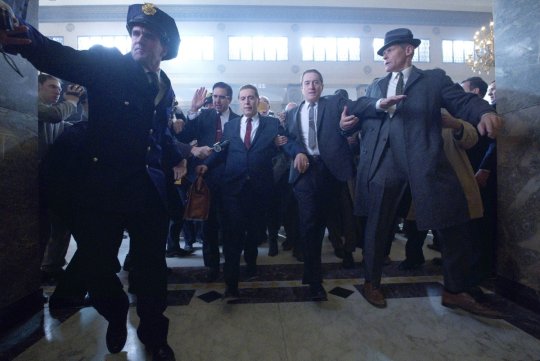
John Wick (2014) In the first part of what is now a series, a former hitman (Keanu Reeves) exits retirement to find and kill those that stole his car and killed his dog. Less story, more action, with the filmmakers drawing on anime, Hong Kong action cinema, Spaghetti Westerns, and French crime dramas. Jurassic Park (1993) It might be over 25 years old at this point but watching the very first Jurassic film from Steven Spielberg — based on Michael Crichton's novel, which he co-adapted — is a great way to remind yourself why the new series, Jurassic World, has no idea why it's doing. Kahaani (2012) A pregnant woman (Vidya Balan) travels from London to Kolkata to search for her missing husband in writer-director Sujoy Ghosh's National Award-winning mystery thriller, battling sexism and a cover-up along the way. Khosla Ka Ghosla! (2006) After a powerful property dealer (Boman Irani) holds a middle-class, middle-aged man's (Anupam Kher) newly-purchased property to ransom, his son and his son's friends devise a plot to dupe the swindling squatter and pay him back with his own money. Dibakar Banerjee's directorial debut. Kiki's Delivery Service (1989) A coming-of-age story of the young titular witch, who opens an air delivery business, helps a bakery's pregnant owner in exchange for accommodation, and befriends a geeky boy during her year of self-discovery. Hayao Miyazaki writes and directs. Lady Bird (2017) Greta Gerwig's directorial debut is a coming-of-age story of a high school senior (Saoirse Ronan) and her turbulent relationship with her mother (Laurie Metcalf), all while she figures out who she wants to be through friendships and short relationships. Lagaan (2001) Set in Victorian India, a village farmer (Aamir Khan) stakes everyone's future on a game of cricket with the well-equipped British, in exchange for a tax reprieve for three years. The Little Prince (2015) Antoine de Saint-Exupery's 1943 novella is given the animation treatment, in which an elderly pilot (Jeff Bridges) recounts his encounters with a young boy who claimed to be an extra-terrestrial prince to his neighbour, a young girl. Rachel McAdams, James Franco, and Marion Cotillard also voice. A Little Princess (1995) Alfonso Cuarón directs this tale of a young girl who is forced to become a servant by the headmistress at her New York boarding school, after her wealthy aristocratic father is presumed dead in World War I. The Lord of the Rings trilogy (2001-2003) Peter Jackson brought J.R.R. Tolkien's expansive Middle-Earth to life in these three three-hour epics, which charts the journey of a meek hobbit (Elijah Wood) and his various companions, as they try to stop the Dark Lord Sauron by destroying the source of his power, the One Ring.

Loveless (2017) A Cannes winner about the social ills of life in modern Russia, told through the eyes of two separated parents who are drawn back together after their 12-year-old child goes missing. From award-winning director Andrey Zvyagintsev. The Lunchbox (2013) An unlikely mistake by Mumbai's famously efficient lunchbox carrier system results in an unusual friendship between a young housewife (Nimrat Kaur) and an older widower (Irrfan Khan) about to retire from his job. Lupin the Third: Castle of Cagliostro (1979) In legendary Japanese director Hayao Miyazaki's feature debut, a dashing master thief enlists the help of a long-time nemesis in the police and a fellow thief to rescue a princess from an evil count, and put an end to his counterfeit money operation. Marriage Story (2019) Scarlett Johansson and Adam Driver play an entertainment industry couple going through a divorce, which pulls them — and their young son — from New York to Los Angeles, the two different hometowns of the protagonists. Mary Poppins (1964) Based on P.L. Travers' book series of the same name, a disciplined father hires a loving woman (Julie Andrews) — who he doesn't know is capable of magic — to be the nanny for his two mischievous children. Won five Oscars, including best actress for the debutant Andrews. Masaan (2015) Neeraj Ghaywan ventures into the heartland of India to explore the life of four people in his directorial debut, all of whom must battle issues of caste, culture and norms. Winner of a National Award and the FIPRESCI Prize at Cannes. Million Dollar Baby (2004) An overlooked, veteran boxing trainer (Clint Eastwood, who also directs) reluctantly agrees to train a former waitress (Hilary Swank) to help achieve her dreams, which leads to a close father-daughter bond that will forever change their lives. Mission: Impossible – Rogue Nation (2015) With the organisation he works for disbanded and his country after him, Ethan Hunt (Tom Cruise) races against time to prove the existence of the schemers pulling the strings in this fifth chapter. Introduced Rebecca Ferguson to the franchise. Monty Python and the Holy Grail (1975) The legendary British comedy troupe mix their talents with the tale of King Arthur and his knights, as they look for the Holy Grail and encounter a series of horrors. A contender for the best comedy of all-time.

Monty Python's Life of Brian (1979) Satire so cutting that it was banned for years in the UK and elsewhere, Life of Brian saw Monty Python turning their eyes on more long-form storytelling. The Life of Brian is the story of a young Jewish man born on the same day and next door to Jesus Christ, who gets mistaken for the messiah. Mudbound (2017) A Netflix Original, this World War II drama is set in rural Mississippi, and follows two veterans – one white and one black – who return home, and must deal with problems of racism in addition to PTSD. Munna Bhai M.B.B.S. (2003) After his parents find out he has been pretending to be a doctor, a good-natured Mumbai underworld don (Sanjay Dutt) tries to redeem himself by enrolling in a medical college, where his compassion brushes up against the authoritarian dean (Boman Irani). Co-written and directed by Rajkumar Hirani, who stands accused in the #MeToo movement. My Neighbor Totoro (1988) Set in post-war rural Japan, a heart-warming tale of a professor's two young daughters who have adventures with friendly forest sprits. Hayao Miyazaki writes and directs. Mystic River (2003) Three childhood friends reunite after a brutal murder, in which the victim is one's (Sean Penn) daughter, another (Kevin Bacon) is the case detective, and the third (Tim Robbins) is suspected by both. Clint Eastwood directs. Nightcrawler (2014) Jake Gyllenhaal plays a freelance video journalist with no ethics or morals who will do anything to get the best footage of violent crimes that local news stations love. A feature directorial debut for screenwriter Dan Gilroy. Ocean's Eleven (2001) In this first of Steven Soderbergh's trilogy, which features an ensemble cast including George Clooney, Brad Pitt, and Matt Damon, Danny Ocean (Clooney) and his eleven associates plan to rob three Las Vegas casinos at the same time. Okja (2017) Part environment parable and part skewer of corporatisation, this underappreciated Netflix Original by Bong Joon-ho tells its story of a young Korean girl and her best friend – a giant pet pig – while effortlessly crossing genres. On Body and Soul (2017) A shy, introverted man and a woman who work at a Hungarian slaughterhouse discover they share the same dreams after an incident, and then try to make them come true.
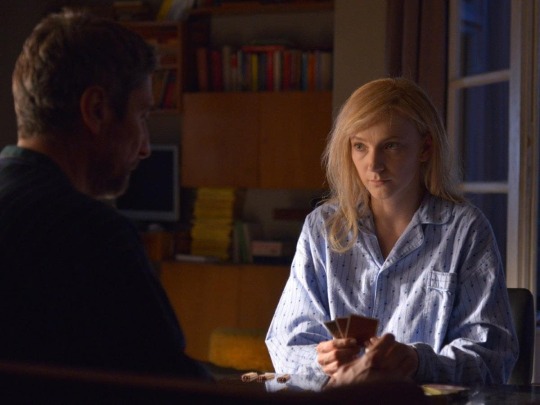
Only Yesterday (1991) A Studio Ghibli production about a 27-year-old career-driven Tokyo woman who reminisces about her childhood on her way to the countryside to see her sister's family. Isao Takahata writes and directs. Paan Singh Tomar (2012) A true story of the eponymous soldier and athlete (Irrfan Khan) who won gold at the National Games, and later turned into a dacoit to resolve a land dispute. Won top honours for film and actor (Khan) at National Awards. Pan's Labyrinth (2006) In Guillermo del Toro's fantastical version of Spain five years after the civil war, Ofelia – a young stepdaughter of a cruel army officer – is told she is the reincarnated version of an underworld princess but must complete three tasks to prove herself. The Perks of Being a Wallflower (2012) Emma Watson stars in this coming-of-age comedy based on the novel of the same name by Stephen Chbosky, who also wrote and directed the film. Watson plays one of two seniors who guide a nervous freshman. Phantom Thread (2017) Set in the glamourous couture world of 1950s post-war London, the life of a renowned dressmaker (Daniel Day-Lewis), who is used to women coming and going through his tailored life, unravels after he falls in love with a young, strong-willed waitress. Pink (2016) A lawyer (Amitabh Bachchan) comes out of retirement to help three women (Taapsee Pannu, Kirti Kulhari, and Andrea Tariang) clear their names in a crime involving a politician's nephew (Angad Bedi). Won a National Award. PK (2014) A satirical comedy-drama that probes religious dogmas and superstitions, through the lens of an alien (Aamir Khan) who is stranded on Earth after he loses his personal communicator and befriends a TV journalist (Anushka Sharma) as he attempts to retrieve it. Porco Rosso (1992) Transformed into an anthropomorphic pig by an unusual curse, an Italian World War I ace fighter veteran now works as a freelance bounty hunter in 1930s Adriatic Sea in the Mediterranean. Hayao Miyazaki writes and directs. Queen (2013) A 24-year-old shy woman (Kangana Ranaut) sets off on her honeymoon alone to Europe after her fiancé calls off the wedding a day prior. There, freed from the traditional trappings and with the help of new friends, she gains a newfound perspective on life. Director Vikas Bahl stands accused in the #MeToo movement.
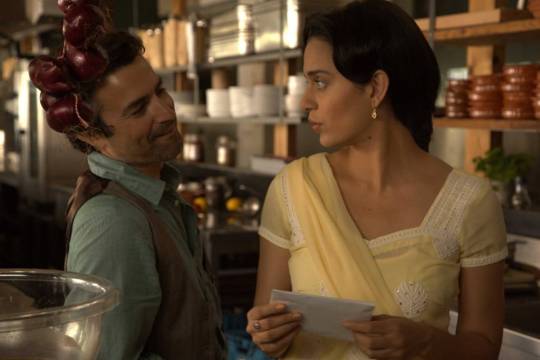
Rang De Basanti (2006) Aamir Khan leads the ensemble cast of this award-winning film that focuses on four young New Delhi men who turn into revolutionary heroes themselves while playacting as five Indian freedom fighters from the 1920s for a docudrama. Ratatouille (2007) An anthropomorphic rat (Patton Oswalt) who longs to be a chef tries to achieve his dream by making an alliance with a young garbage boy at a Parisian restaurant. From Pixar. Rebecca (1940) Alfred Hitchcock's first American film is based on Daphne du Maurier's 1938 novel of the same name, about a naïve, young woman who marries an aristocratic widower and then struggles under the intimidating reputation of his first wife, who died under mysterious circumstances. The Remains of the Day (1993) Made by the duo of Ismail Merchant and James Ivory, this based-on-a-book film is about a dedicated and loyal butler (Anthony Hopkins), who gave much of his life — and missed out on a lot — serving a British lord who turns out to be a Nazi sympathiser. Reservoir Dogs (1992) After a simply jewellery heist goes wrong in Quentin Tarantino's feature-length debut, six criminals – Tim Roth, Steve Buscemi, and Michael Madsen are a few of the actors – who don't know each other's identity start to suspect each other of being a police informant. The Revenant (2015) Leonardo DiCaprio and director Alejandro G. Iñárritu won Oscars for their work on this semi-biographical Western film set in the 1820s, which tells the story of frontiersman Hugh Glass and his quest for survival and justice amidst severe winters. Roma (2018) Alfonso Cuarón revisits his childhood in the eponymous Mexico City neighbourhood, during the political turmoil of the 1970s, through the eyes of a middle-class family's live-in maid, who takes care of the house and four children, while balancing the complications of her own personal life. Sairat (2016) In a tiny village in the Indian state of Maharashtra, a fisherman's son and a local politician's daughter fall in love, which sends ripples across the society because their families belong to different castes. Currently the highest-grossing Marathi-language film of all time. Scarface (1983) Al Pacino delivers one of his best performances as a Cuban refugee who arrives in 1980s Miami with nothing, rises the ranks to become a powerful drug kingpin, and then falls due to his ego, his paranoia, and a growing list of enemies. Se7en (1995) In this dark, gripping thriller from David Fincher, two detectives – one new (Brad Pitt) and one about to retire (Morgan Freeman) – hunt a serial killer (Kevin Spacey) who uses the seven deadly sins as his motives. Secret Superstar (2017) Though frequently melodramatic, this coming-of-age story – produced by Aamir Khan and wife Kiran Rao – of a Muslim girl from Vadodara who dreams of being a singer dealt with important social issues and broke several box office records during its theatrical run.
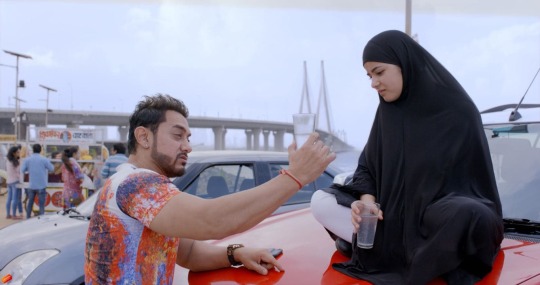
Sense and Sensibility (1995) Jane Austen's famous work is brought to life by director Ang Lee, about three sisters who are forced to seek financial security through marriage after the death of their wealthy father leaves them poor by the rules of inheritance. The Shining (1980) Stephen King's popular novel gets the film treatment from Stanley Kubrick, about a father who loses his sanity in an isolated hotel the family is staying at for the winter, while his psychic son sees horrific forebodings from the past and the future. Shoplifters (2018) Winner of the top prize at Cannes, the story of a group of poverty-stricken outsiders scraping together an under-the-radar living in Tokyo, whose life is upended after they take in a new, young member. Hirokazu Kore-eda writes, directs, and edits. Shrek (2001) A half-parody of fairy tales, Shrek is about an eponymous ogre who agrees to help an evil lord get a queen in exchange for the deed to his swamp, filled with enough jokes for the adults and a simple plot children. A Silent Voice: The Movie (2016) Based on the manga of the same name, a coming-of-age story of a school bully who tries to make amends with a hearing-impaired girl he tormented back in the day, after the tables are turned on him. Silver Linings Playbook (2012) Two people (Jennifer Lawrence and Bradley Cooper) with pain and suffering in their past begin a road to recovery while training together for a dance competition, in what becomes an unlikely love story. The Sixth Sense (1999) In writer-director M. Night Shyamalan's best film to date, a child psychologist (Bruce Willis) tries to help a young boy (Haley Joel Osment) who can see and talk to the dead. Snowpiercer (2013) Chris Evans stars in this sci-fi from Bong Joon-ho, which takes place in a future ravaged by an experiment, where the survivors live on a train that continuously circles the globe and has led to a punishing new class system. The Social Network (2010) The tale of Facebook co-founder Mark Zuckerberg gets a slight fictional spin, as it explores how the young engineer was sued by twin brothers who claimed he stole their idea, and sold lies to his co-founder and squeezed him out.
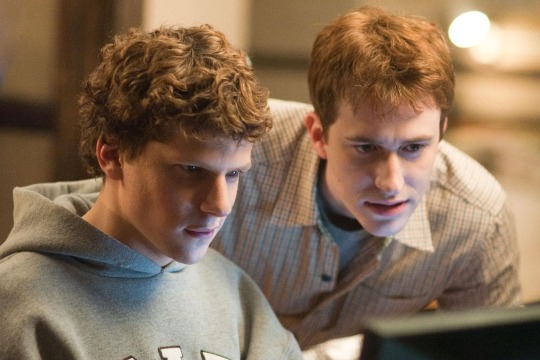
Soni (2019) A short-tempered young policewoman and her cool-headed female boss must contend with ingrained misogyny in their daily lives and even at work, where it impacts their coordinated attempts to tackle the rise of crimes against women in Delhi. Spartacus (1960) After failing to land the title role in Ben-Hur, Kirk Douglas optioned a book with a similar theme, about a slave who led a revolt — known retrospectively as the Third Servile War — against the mighty Roman Empire. Won four Oscars and was named as one of the best historical epics. The Stranger (1946) A war crimes investigator hunts a high-ranking Nazi fugitive (Orson Welles, also director) hiding in the US state of Connecticut, who is also duping his naïve new wife. Super Deluxe (2019) An inter-linked anthology of four stories, involving an unfaithful wife, a transgender woman, a bunch of teenagers, which deal in sex, stigma, and spirituality. Runs at nearly three hours. Swades (2004) Shah Rukh Khan stars a successful NASA scientist in this based on a true story drama, who returns home to India to take his nanny to the US, rediscovers his roots and connects with the local village community in the process. Taare Zameen Par (2007) Sent to boarding school against his will, a dyslexic eight-year-old is helped by an unconventional art teacher (Aamir Khan) to overcome his disability and discover his true potential. Talvar (2015) Meghna Gulzar and Vishal Bhardwaj combine forces to tell the story of the 2008 Noida double murder case, in which a teenage girl and the family's hired servant were killed, and the inept police bungled the investigation. Uses the Rashomon effect for a three-pronged take. Tangerine (2015) Shot entirely on iPhones, a transgender female sex worker vows revenge on her boyfriend-pimp who cheated on her while she was in jail. Tangled (2010) Locked up by her overly protective mother, a young long-haired girl finally gets her wish to escape into the world outside thanks to a good-hearted thief, and discovers her true self.

Thithi (2016) In this award-winning Kannada-language film, set in a remote village in the state of Karnataka, three generations of men reflect on the death of their locally-famous, bad-tempered 101-year-old patriarch. Made with a cast of non-professional actors. The Town (2010) While a group of lifelong Boston friends plan a major final heist at Fenway Park, one of them (Ben Affleck) falls in love with the hostage from an earlier robbery, complicating matters. Train to Busan (2016) Stuck on a blood-drenched bullet train ride across Korea, a father and his daughter must fight their way through a countrywide zombie outbreak to make it to the only city that's safe. Tu Hai Mera Sunday (2016) Five thirty-something friends struggle to find a place in Mumbai where they can play football in peace in this light-hearted rom-com tale, which explores gender divides and social mores along the way. The Two Popes (2019) Inspired by real life, the tale of friendship that formed between Pope Benedict XVI (Anthony Hopkins) and Cardinal Jorge Mario Bergoglio (Jonathan Pryce), the future Pope Francis, after the latter approached the former regarding his concerns with the direction of the Catholic Church. Udaan (2010) Vikramaditya Motwane made his directorial debut with this coming-of-age story of a teenager who is expelled from boarding school and returns home to the industrial town of Jamshedpur, where he must work at his oppressive father's factory. Udta Punjab (2016) With the eponymous Indian state's drug crisis as the backdrop, this black comedy crime film depicts the interwoven lives of a junior policeman (Diljit Dosanjh), an activist doctor (Kareena Kapoor), a migrant worker (Alia Bhatt), and a rock star (Shahid Kapoor). Uncut Gems (2019) A charismatic, New York-based Jewish jeweller and a gambling addict (Adam Sandler) ends up in over his head in this taut thriller, struggling to keep a lid on his family, desires, business, and enemies. The Untouchables (1987) With mobster Al Capone (Robert De Niro) making use of the rampant corruption during the Prohibition period in the US, federal agent Eliot Ness (Kevin Costner) hand picks a team to expose his business and bring him to justice. Brian De Palma directs. Up in the Air (2009) A corporate downsizing expert (George Clooney) who loves living out of a suitcase finds his lifestyle threatened due to a potential love interest (Vera Farmiga) and an ambitious new hire (Anna Kendrick).
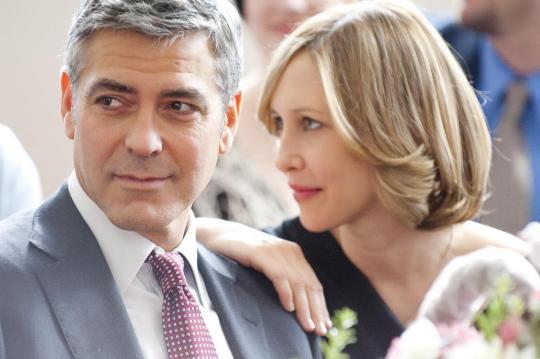
Vertigo (1958) Topping Citizen Kane in the latest Sight & Sound poll of greatest films of all time, Alfred Hitchcock's thriller about a detective afraid of heights who falls for an old friend's wife while investigating her strange activities continued his tradition of turning audiences into voyeurs. Village Rockstars (2017) A young Assamese girl of a widow pines to own a guitar and start her own rock band, but societal norms routinely get in the way. Rima Das writes, directs, shoots, edits, and handles costumes. Visaranai (2015) Winner of three National Awards and based on M. Chandrakumar's novel Lock Up, the story of four Tamil laborers who are framed and tortured by politically-motivated cops in the neighbouring state of Andhra Pradesh. Vetrimaaran writes and directs. A Wednesday! (2008) Neeraj Pandey's film is set between 2 pm and 6 pm on a Wednesday, naturally, when a common man (Naseeruddin Shah) threatens to detonate five bombs in Mumbai unless four terrorists accused in the 2006 Mumbai train bombings case are released. Wonder Woman (2017) After a pilot crashes and informs them about an ongoing World War, an Amazonian princess (Gal Gadot) leaves her secluded life to enter the world of men and stop what she believes to be the return of Amazons' nemesis. Wreck-It Ralph (2012) This Disney animated film tells the story of a video game villain who sets out to fulfil his dream of becoming a hero but ends up bringing havoc to the entire arcade where he lives. Zero Dark Thirty (2012) The decade-long international manhunt for Osama bin Laden is the focus of this thriller from Kathryn Bigelow, dramatised as and when needed to keep a CIA intelligence analyst (Jessica Chastain) at the centre of the story. Zindagi Na Milegi Dobara (2011) Hrithik Roshan, Farhan Akhtar, and Abhay Deol star as three childhood friends who set off on a bachelor trip across Spain, which becomes an opportunity to heal past wounds, combat their worst fears, and fall in love with life. Zodiac (2007) David Fincher signed on Jake Gyllenhaal, Mark Ruffalo, and Robert Downey Jr. to depict a cartoonist's (Gyllenhaal) obsession with figuring out the identity of the Zodiac Killer in the 1960s–70s. Zombieland (2009) A student looking for his parents (Jesse Eisenberg), a man looking for a favourite snack, and two con artist sisters join forces and take an extended road trip across a zombie-filled America, while they all search for a zombie-free sanctuary. Read the full article
#1technews#0financetechnology#0technologydrive#03technologysolutions#0dbtechnology#1technologycourtpullenvale#1technologydr#1technologydrive#1technologydrivemilpitasca95035#1technologydrivepeabodyma#1technologyplace#1technologyplacerocklandma#1technologywaynorwoodma#1/0technologycorp#2technologydrivestauntonva24401#2technologydrivewarrennj#2technologydrivewestboroughma01581#2technologyfeaturestopreventcounterfeiting#2technologyplace#2technologyplacemacquarie#2technologywaynorwoodma#2000stechnology#3technologybets#3technologycircuithallam#3technologydrive#3technologydrivemilpitasca95035#3technologydrivepeabodyma#3technologyltd#3technologywaynorwoodma#360technewshindi
2 notes
·
View notes
Text
25 facts about 9/11 you probably don't know.
1. After 9/11, the Masai tribesmen of Kenya donated 14 cows to the US to help with the aftermath of 9/11. To the Masai, the cow equals life.
2. On 9/11, when all transport out of the city was shut down, boat owners managed to transport over 500,000 people from Manhattan Island in an amazing act known as the “9/11 Boatlift”
3. On September 11th, 2001, Officer John Perry was at police headquarters filing his retirement papers when he was notified about the first airplane striking the first tower. He rushed to the scene to assist with rescue operations and was killed when one of the towers collapsed. He was the only off-duty officer killed on 9/11.
4. On 9/11, after the first plane hit the North Tower, people in the South Tower wanted to leave but were advised by an announcement to stay at their desks. Some of those who tried to leave anyway were turned back by security in the building before the exits. About 1,120 of them died.
5. After 9/11, the Queen of England authorized the Coldstream Guards to break protocol and play the US national anthem during the Changing of the Guard, giving some comfort to Americans stranded in London due to airport closures.
6-10 Interesting Facts About 9/11
6. During the aftermath of 9/11, Search and Rescue dogs found so few living people, that it caused them great stress because they believed they had failed. Handlers and Rescue workers had to regularly hide in the rubble in order to give the rescue dogs a successful find, and keep their spirits up.
7. On 9/11 two jet fighters took to the air without live ammunition, knowing that to prevent the hijackers from striking their intended targets, the pilots might have to intercept and crash their fighters into the hijacked planes, ejecting at the last moment.
8. Afghan resistance leader Ahmad Shah Massoud, who fought against the Soviets in the 1980s, was also against a fundamentalist interpretation of Islam. He was assassinated two days before 9/11, after warning of a major terrorist attack set to happen in the United States.
9. The company that owned the World Trade Center had scheduled a meeting for 9/11 on the 88th floor of tower 1 to discuss what to do in the event of a terrorist attack, but rescheduled the night before because one participant could not attend.
10. Tania Head, a well-known 9/11 survivor, faked being in the South Tower during the attacks and served as President of The WTC Survivors Network before people found out she was lying. She was not even in the United States during the attacks.
11-15 Interesting Facts About 9/11
11. Operation Yellow Ribbon was commenced by Canada to handle the diversion of civilian airline flights in response to the September 11 attacks in 2001. Canada took in 255 diverted flights from the US on 9/11 and then the Canadians fed the diverted passengers.
12. The Ahmadiyya Muslim Community collected 11,170 pints of blood (enough to help save 30,000 lives) in honor of the 9/11 victims.
13. An investment bank which lost 75% of its employees in 9/11 sued American Airlines for negligence in allowing terrorists on board, and won $135 million.
14. Scientists were monitoring whale stress levels by analyzing their poop and found that their stress plummeted immediately following the 9/11 attacks. It turns out this was due to all the ship traffic being halted which quieted the oceans of low frequency noise which whales use to communicate.
15. A guide dog calmly led her owner and 30 other people down 1,463 steps out of the World Trade Center on 9/11 despite the confusion, smoke, and noise around them. After descending over half the distance, they passed the firemen who were heading up, who the dog stopped to greet. Once safe, the dog then helped a woman who was blinded by the debris.
16-20 Interesting Facts About 9/11
16. The only American not on Earth during 9/11 was astronaut Frank L. Culberston, who recorded the event from the ISS. He later learned that the pilot of the plane that struck The Pentagon was Charles Burlingame, a classmate of his from the US Naval Academy.
17. Al-Qaeda initially planned to target nuclear installations rather than the World Trade Center and the Pentagon, but decided against it, fearing things could “get out of control.”
18. 9/11 caused an extra 1600 people to die in automobile accidents because they switched their travel plans from flying to driving.
19. Ben Sliney, chief of air-traffic-control operations at the FAA’s command center in Herndon, Virginia, gave the unprecedented order to ground 4,000-plus planes across the nation and redirect any in the sky to the nearest airport. It was his first day on the job.
20. Sky News UK initially reported that “the entire eastern seaboard of the United States has been decimated by a terrorist attack” on 9/11.
21-25 Interesting Facts About 9/11
21. The names on the 9/11 Memorial are arranged by relationship, instead of alphabetically, in order to preserve the bonds of family and friendship, and to show the connections between people who changed each other’s lives that day
22. The only plane allowed to fly on 9/11 after the attacks was a plane from San Diego to Miami delivering anti-venom to a man bitten by a highly poisonous snake. It was accompanied by two jet fighters.
23. Leaders that vehemently denounced the attacks included the Presidents of Egypt, the Palestinian Authority, Libya, Syria, Iran and Pakistan. The sole exception was Saddam Hussein, who said that “the American cowboys are reaping the fruit of their crimes against humanity.”
24. The US government paid an average of $1.8 million to the families of the victims of 9/11.
25. The first firefighter to die on 9/11 was hit by a jumper.
Never forget. Always remember.
Even if you weren’t there, or if you don’t remember it, it has some sort of impact on your life. Our society will forever be changed by this event, our futures different because of this terrible tragedy.
Never forget.


8 notes
·
View notes
Text
Preacher
“If the Devil created Texas like some folks say he did, this is where he rested on the seventh day.” - Preacher
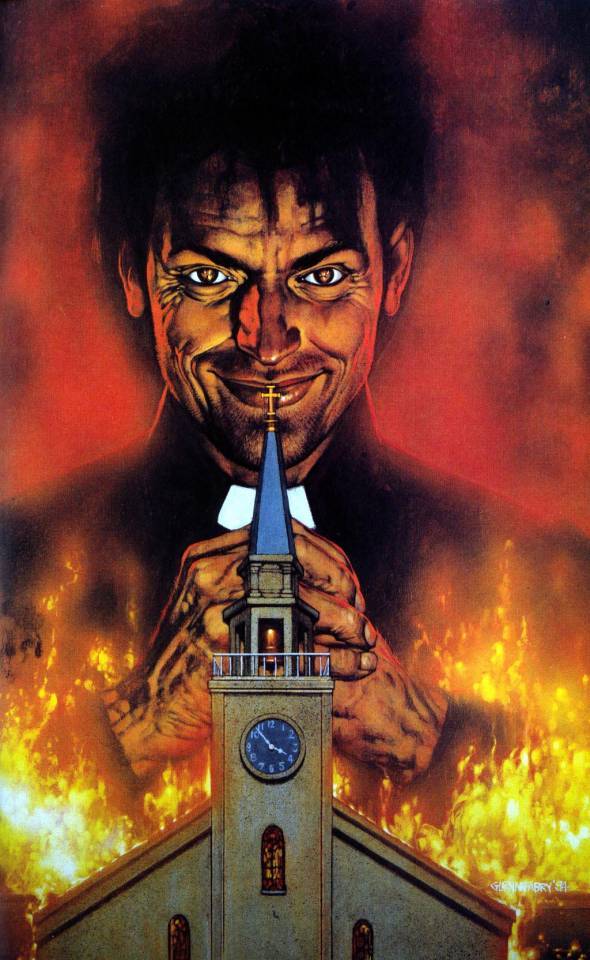
Real Name: Jesse Custer
Gender: Male
Eyes: Black
Hair: Black
Powers:
Divine Empowerment
Abilities:
Hand-to-Hand Combat (Advanced)
Tactical Analysis
Theology
Deception
Universe: Preacher
Base of Operations: Texas
Citizenship: American
Parents:
John Custer; father
Christina L’Angell; mother
Marital Status: Single
Occupation: Reverend
First Appearance: Preacher #1 (April, 1995)
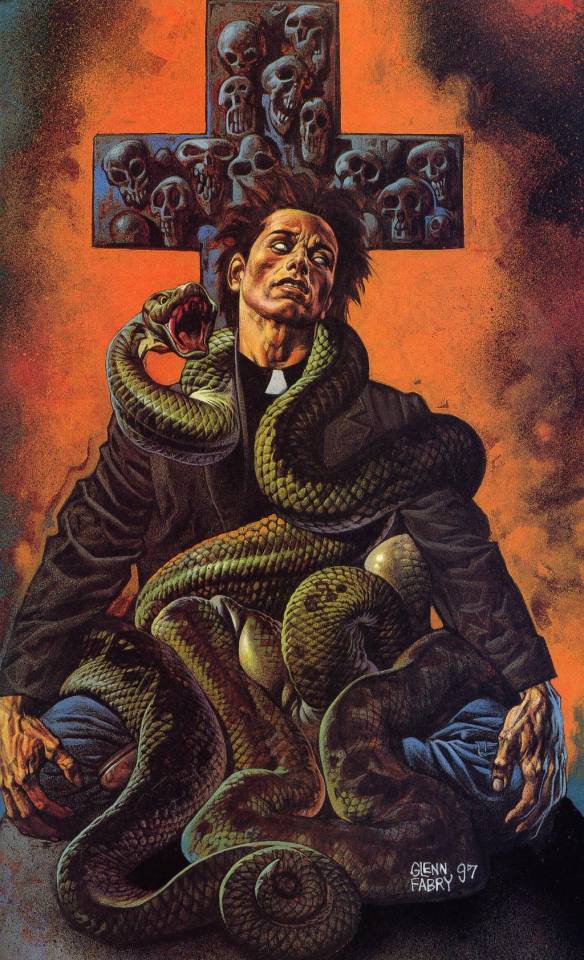
Powers
Divine Empowerment: Jesse Custer is possessed by a powerful entity from Heaven, called Genesis. It is the offspring of an angel and demon.
Mind Control: Jesse Custer is possessed by a powerful entity called Genesis. Granted access to the word of God, he can physically force people to do whatever he wants them to do, through the power of God.
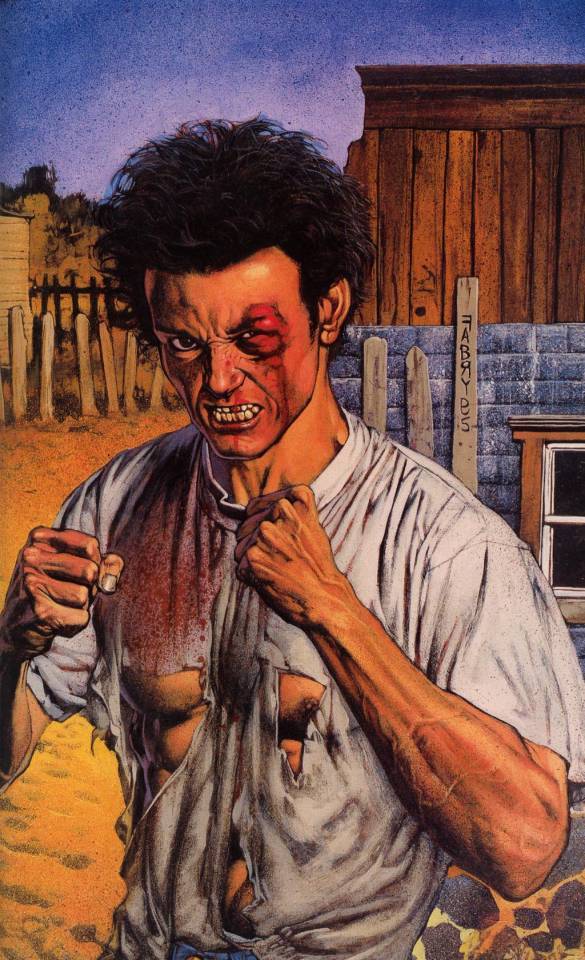
Abilities
Hand-to-Hand Combat (Advanced): Jesse is an extremely efficient opponent, able to overpower multiple strong foes.
Tactical Analysis
Theology
Deception
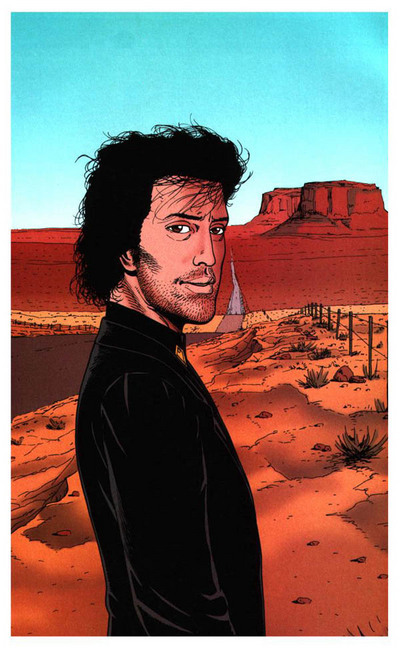
Early Life
Jesse Custer was born to John Custer and Christina L'Angell. When he was toddler, his family was attacked by Jody and T.C., who worked for Christina's family. They were all kidnapped and taken to Angelville, the L'Angell's house. There, Marie L'angell, Christina's mother, ordered John to marry Christina, and said that they would raise Jesse as a man of God. She also threatened to kill them if they ever tried to leave. After a while, John Custer decided to try and escape. Jody and T.C. caught them before they were two miles away. John Custer was executed, and Jesse decided he would never cry again. After John died, Christina was never the same. She eventually tried to escape, but was shot by Jody and presumed dead. With both of his parents gone, Jesse was left in the care of Marie L'Angell. When Jesse was much older, he escaped, and started working his way toward Texas.
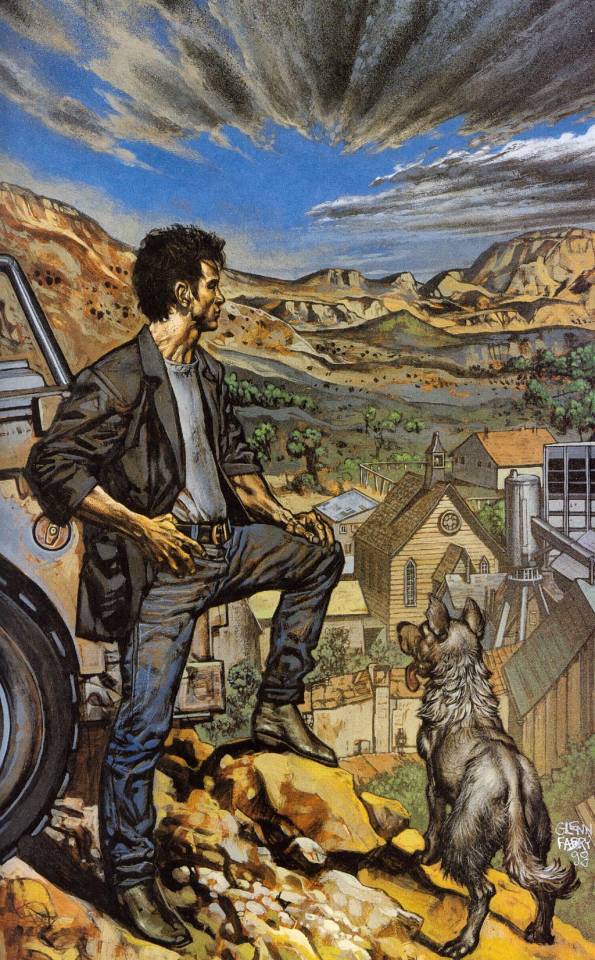
Return to Angelville
Jesse met Tulip O'Hare, and the two fell in love. Months later, they were on a park bench in Northern Texas, and Jesse announced that he was taking her to California. She went to buy him a beer, and once she was gone, Jody and T.C. sat down on either side of him, and announced that they were taking him back to Angelville. They told him that they would kill Tulip if he resisted.
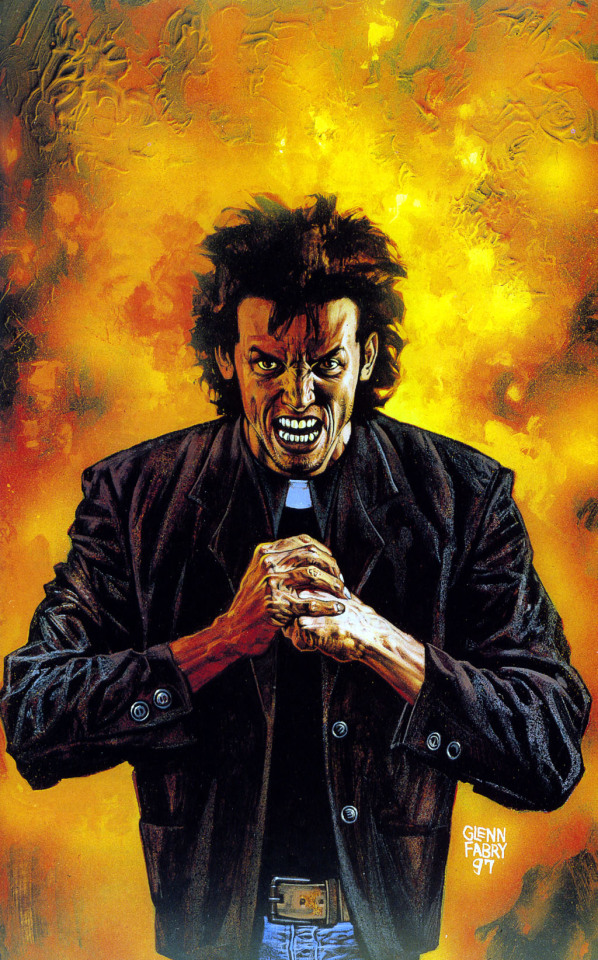
Becoming Preacher
With no fight left in him, Jesse turned to God, which was what Marie L'Angell had been waiting for. She pulled some strings and got him a church in Annville, and he was appointed Preacher. He eventually tired of life there, and started drinking copious amounts of alcohol. One night, he decided he was fed up with the people of Annville, and told them so the next morning. He was beat up, and he woke up the next day with intent to preach about forgiveness. However, before he could give his sermon, Jesse merged with Genesis, a creature who had escaped from Heaven, and gained the ability to force people to do anything. This merging resulted in an explosion that killed everyone in Annville but Jesse.
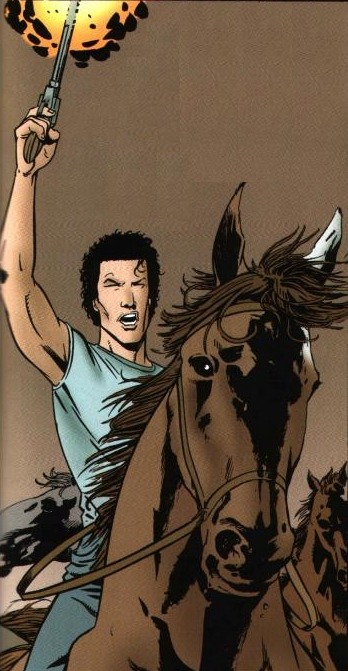
The Search for God
After the Annville incident, the police searched for whoever caused the explosion. Angels from Heaven had hired the Saint of Killers, an immortal being whose only purpose was to kill, to find Genesis and kill it. Meanwhile, Jesse, Tulip, and Cassidy were just outside of Annville, standing around Cassidy's pickup truck, while Jesse described the sensation of having Genesis in his head to the others. The trio were then surprised by the police, led by Hugo Root. Jesse told all the police to drop their guns and let them go. When all the police obeyed, Jesse realized the power he had been given. After the three drove away, the Saint showed up. In the ensuing carnage, all of the cops were killed, except for Root. Later, Jesse and Cassidy were involved in a bar fight, which was reported to the police. Root had informed his superiors about the situation, so the crime was flagged. Soon enough, Jesse, Tulip, and Cassidy were located at a motel. Root took Jesse by surprise; catching him at gunpoint while Custer was exiting the motel. Root then proclaimed that if Jesse tried to speak, he would pull the trigger. When the Saint showed up, Root was distracted. Arseface, Root's son, tried to stop the Saint from killing Root, but before anyone could do anything, Jesse ordered everyone to stop, and forced the Saint to holster his weapons. Then he made the Saint call down the angels who had hired him. DeBlanc, an Angel from heaven, informed everyone present that God had quit, the moment Genesis was created. Jesse swore to find God, and Tulip and Cassidy followed. Jesse ordered Root to do something against Root's beliefs, and Root killed himself afterward.
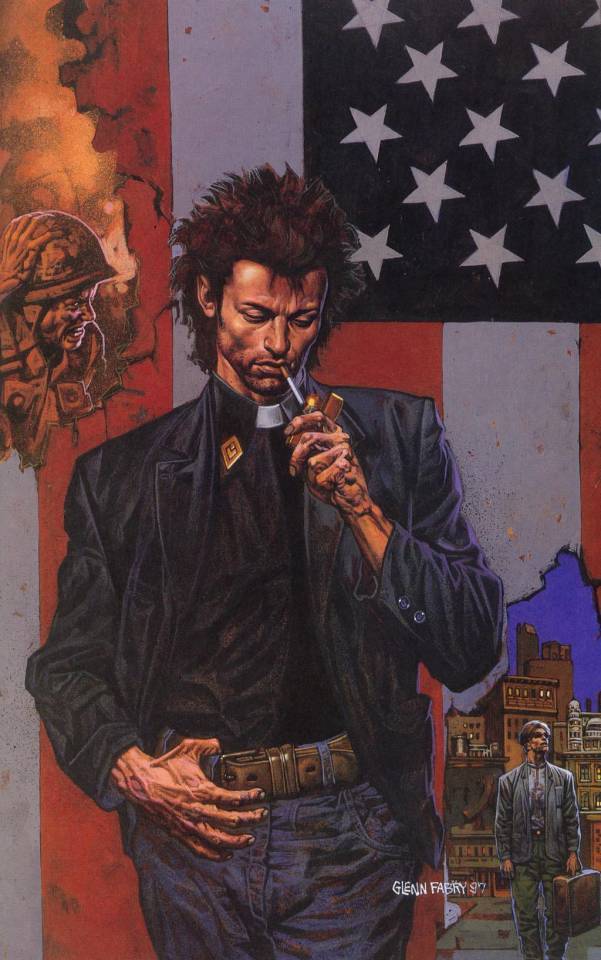
Angelville Once More
Later, Jesse and Tulip were attacked by Jody and T.C. Jesse's power didn't work on the two, so him and Tulip were taken to Angelville. Marie L'Angell claimed that God was on their side, and that was the reason why Jesse's power couldn't affect them. Jody shot and killed Tulip, leaving Jesse in a state of shock. John Wayne, a figment of Jesse's imagination who had been with him since his father died, talked him into fighting back. Jesse tried using his power on T.C., and when it worked, he laid waste to the entire estate. Tulip helped, who had been resurrected by God as a show of good faith. The two killed everyone there, and burned the house down.
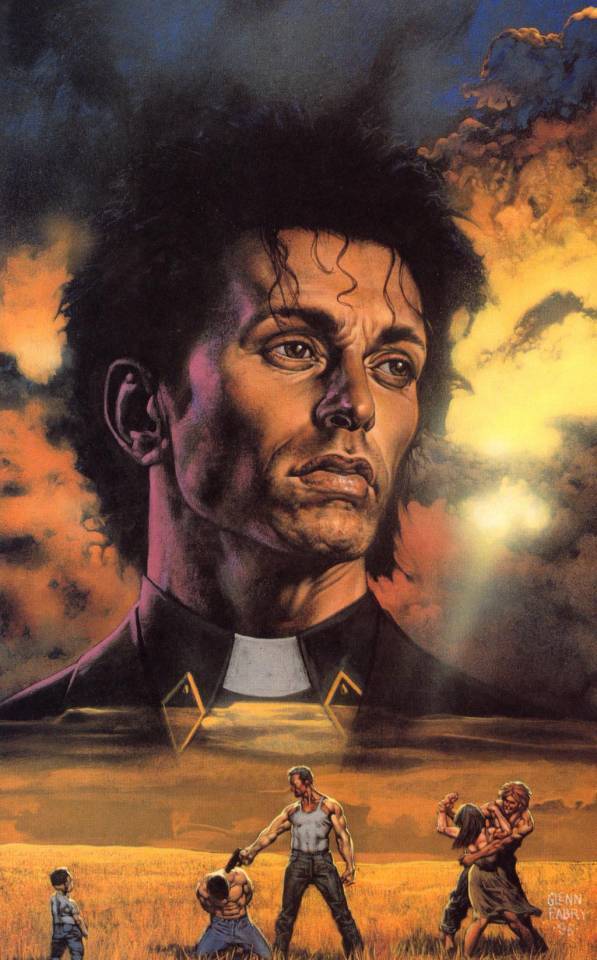
Masada
During the search, Jesse, Tulip, and Cassidy ended up at one of Jesus DeSade's legendary orgies. Herr Starr, a member of The Grail, was searching for Jesse, and arrived at DeSade's party a while afterward, with a small group of armed men. They captured Cassidy, who had told them that he was Jesse in order to save Tulip's life, and took him to their headquarters, Masada. Jesse and Tulip began the journey to Masada, and Jesse met one of his dad's old war friends at JFK airport. Later, Tulip and Jesse stole a car and drove the rest of the way to Masada. At a hotel nearby, Jesse left to find Cassidy himself, worried that Tulip would get hurt. Upon arrival, he ordered the guards to take him to The Allfather, the man in charge of the Grail. The Allfather revealed that he was in fact Jesse's cousin, and threatened to kill him for what he did to Marie. The Allfather forced Herr Starr to duel Jesse in a fight to the death, but Starr ran, leading Jesse to a cell in the basement. He showed Jesse that the Grail had captured a fallen Angel, who was also the father of Genesis. Before the two could speak to it, however, the Saint of Killers showed up. The Saint was about to kill Jesse, but the angel saved him by revealing that Jesse was the only person who could tell him what happened to his family. The Saint agreed to help Jesse escape Masada, if he would later tell him the real story. The angel then told Jesse that God would be at Masada that night. Jesse decided to save Cassidy first, torturing Starr into telling him where Cassidy was. God had visited Cassidy, saving his life and giving him a message for Jesse. Jesse saved him and the two escaped, though Jesse never managed to see God.
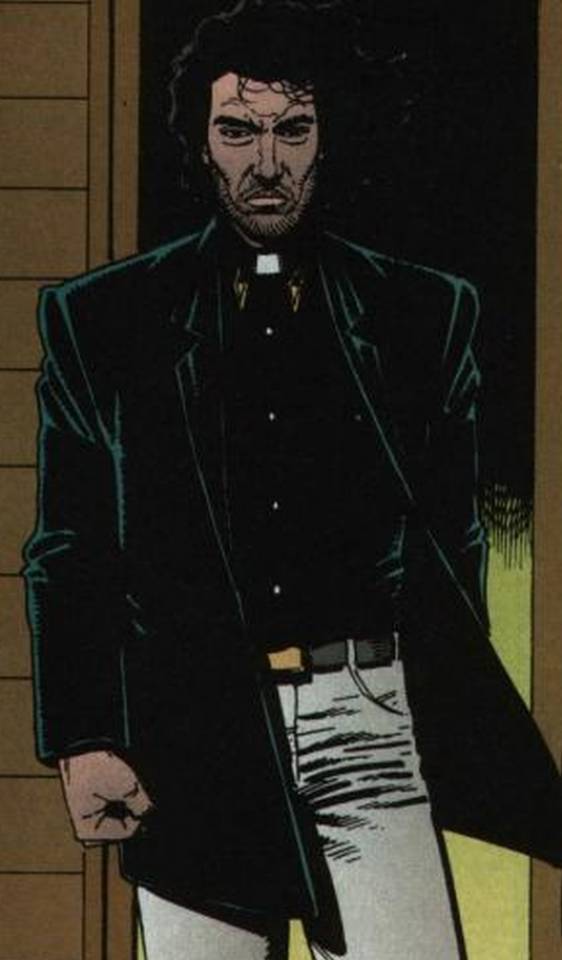
New Orleans
Cassidy told Jesse of a friend of his who was a voodoo priest. Cassidy said he may be able to help him access Genesis's memories. Cassidy, Tulip, and Jesse traveled to New Orleans to meet him. On the way, they ran into Arseface, who threatened to kill Jesse, in revenge for what had happened to Root. Jesse talked him down, and offered him a ride to New Orleans. However, once they got there, Cassidy was immediately noticed by members of Les Enfants du Sang, a cult dedicated to a vampire that Cassidy had killed. Jesse, Cassidy, and Arseface met Xavier, Cassidy's friend. He said he could help them, but not until the following night. Three members of Les Enfants du Sang attempted to kidnap Tulip, who had opted to go to the hotel instead of meeting Xavier. She killed two of them, and ordered the last one to take her to the cult. She shot a few more, then left, threatening to kill anyone who came after her or her friends. The next night, at midnight, Xavier took them all out to a cemetery, including his girlfriend Janis. He introduced Jesse to Luther, his python, who would assist with the hypnosis. He put Jesse under, allowing him to see the true history of the Saint of Killers. While he was under, Les Enfants du Sang showed up, attacking everyone, but targeting Cassidy. They wanted to force him into turning them into vampires. Janis was killed, and Cassidy was beheaded, though he healed later. Jesse decided to head west, and Tulip and Cassidy joined him.

The Ultimate Mexican Standoff
Jesse bought some peyote from a Navajo, and resolved to use it to speak to Genesis directly. Tulip and Cassidy took him to a remote spot in the desert to take it, so they'd be safe. Little did they know, Herr Starr had decided to follow him. Starr also anticipated that the Saint would show up, so he came prepared with an army. Jesse told the Saint what happened to his family, and the Saint proclaimed that they were even, before defeating Starr's army. Jesse, Tulip, and Cassidy were escaping in a plane before Starr called in a E.M.P. missile strike on the Saint. The Saint survived, but the E.M.P. caused Jesse's plane to stop working. Jesse was flung from the plane, with Cassidy trying for dear life to hold on to him. Jesse forced Cassidy to let go, after telling him to tell Tulip that he loved her. Jesse fell into the desert.
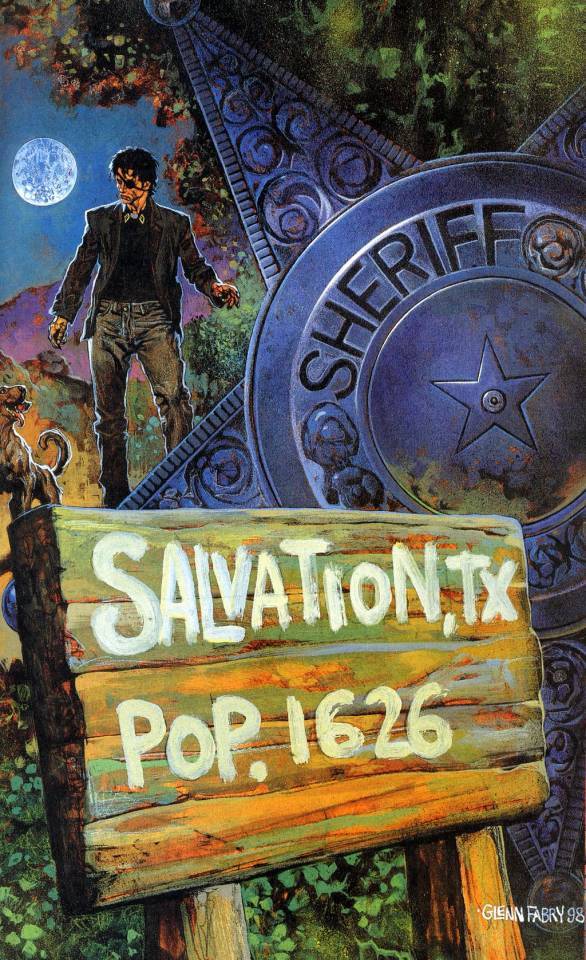
Salvation, Texas
Jesse woke up after being nursed back to health by Johnny Lee Wombat, a disgraced wannabe astronaut, though he was missing his left eye. Jesse stayed with Wombat for a while, but decided to move on and search for Tulip and Cassidy. Along the way, he found Skeeter, a dog who became his new pet. Jesse found his friends, but after he witnessed the two kissing he left without making himself known. He made his way to Salvation, Texas. After rescuing Lorie Bobbs, the sister of his childhood friend, from a group of men who were harassing her, he was offered the position of deputy. He declined, but said he would be sheriff. The current sheriff agreed, and Jesse quickly began cleaning up the town. He also found out that his mother, Christina L'Angell, lived here. Odin Quincannon, a local businessman, approached Jesse and told him to leave his employees alone. Jesse didn't let up, so Quincannon decided to have him killed. Eva Oatlash, Quincannon's lawyer, assisted him. After his first attempt, a car bomb, failed, Quincannon hired the KKK to help him. After that failed, he hired an ex-Navy Seal to place bombs around the town. Quincannon blew up the sheriff's office, and told Jesse to meet him. Right before he blew up the rest of the town, Odin was struck by lightning, though he managed to escape by shooting a local and sneaking off in the resulting chaos. Jesse followed him back to the meatpacking factory he owned, where he discovered that Quincannon had been having sex with meat dolls. Jesse killed him, and moved on from Salvation.
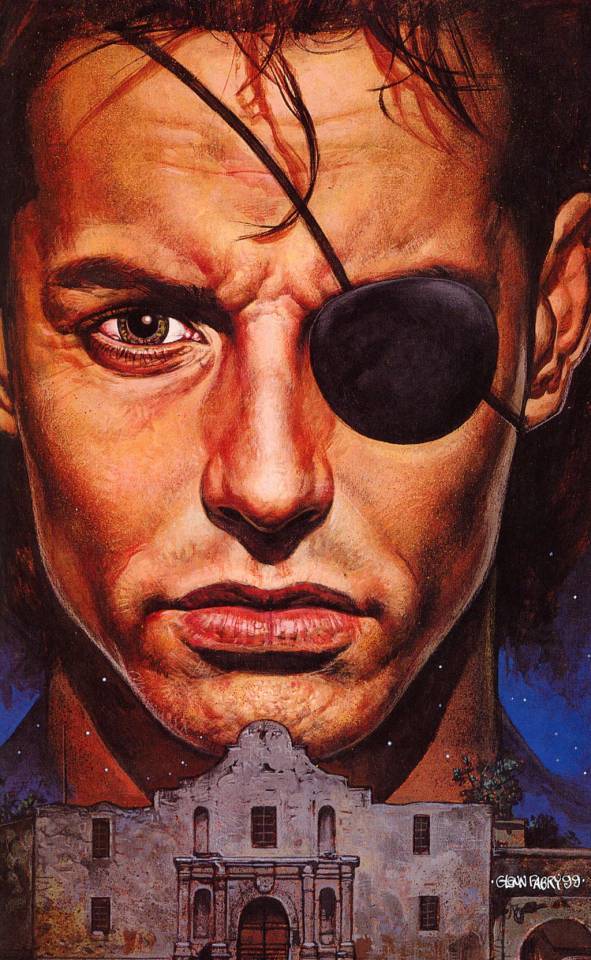
Meeting God
Jesse went to a deserted boat dock and took the peyote he had bought. He immediately started hallucinating, and his hallucinations showed his deepest fears and regrets, also revealing how he really felt about Jesse and Tulip. He then had a flashback, revealing what really happened when he fell from the plane. He died, but God had a conversation with him. The conversation angered God, and in a fit of rage he bit Jesse's eye out. He resurrected Jesse, but left him missing an eye.
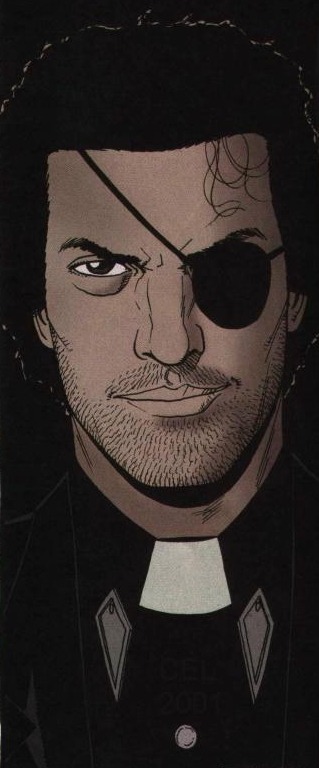
Together Again
Jesse drove to meet Amy Grinderbinder, a mutual friend between him and Tulip. It turned out that Tulip was visiting her too, so the two met again. Amy left to give them their privacy, and after a while, Jesse and Tulip started to talk about everything that had happened. Tulip revealed that Cassidy had given her a steady supply of booze and drugs so that her judgement was so impaired as to let him sleep with her. After six months, she came to her senses and left, shooting him as she went. Jesse found one of Cassidy's old acquaintances, Sally, and she told him of all the awful things that Cassidy used to do. Jesse came back to Tulip, but just after he did, so did Cassidy. Jesse intimidated him into leaving, but not before making plans to meet in two months.
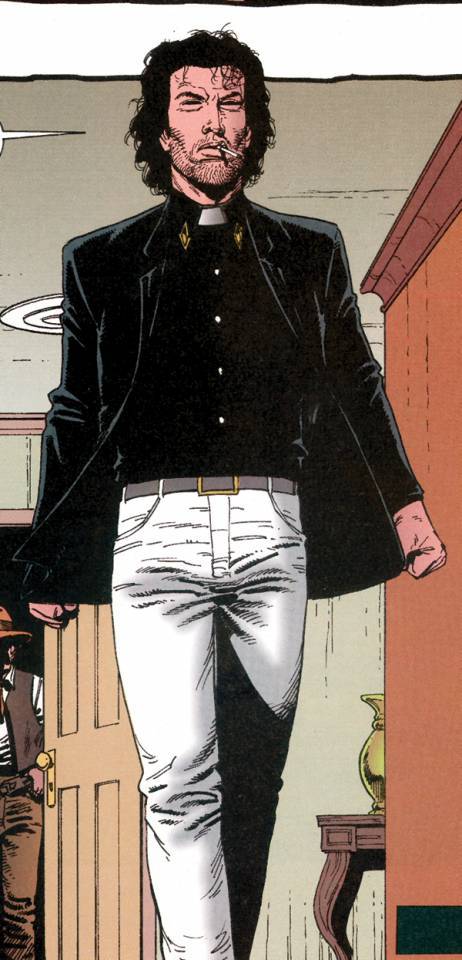
Custer's Last Stand
Jesse visited DeBlanc and Fiore, and interrogated them about past events in Heaven. Then he went and disturbed the Saint of Killers's grave, drawing him out. He convinced the Saint to help him kill God, and sent a message to Herr Starr telling him where he would be in one week. Jesse drugged Tulip, and left her at the hotel, as he was afraid she'd get hurt. Jesse met Cassidy as planned, and planned to fight him in front of the Alamo at five a.m.. Starr prepared his forces to attack Custer, and Hoover and Featherstone followed. Jesse met and fought Cassidy as planned, but the fight ended when Cassidy committed suicide by sunlight. Tulip had woken up and read the note that Jesse left for her, and had rushed to try and save his life. Featherstone, who now realized that Starr was purely being selfish, attempted to kill him, but was shot down herself. Hoover attempted the same, with the same result. One of Starr's men shot Jesse, killing him and Genesis. Tulip killed Starr in revenge. However, Cassidy had made a deal with God, guaranteeing the survival of both himself and Jesse. God resurrected Jesse, without Genesis, and Cassidy, who was no longer a vampire. Jesse met Tulip, and the two rode off into the sunset on a stolen horse.
7 notes
·
View notes
Text
Kerbal Space Program 1.6: “To Vee or not To Vee” is now available!
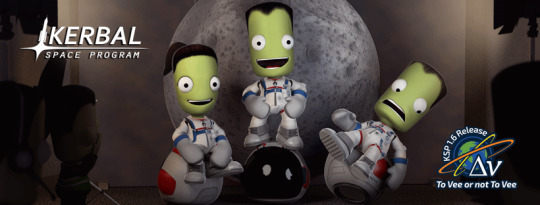
Hello everyone!
Kerbal Space Program 1.6: To Vee or not To Vee has launched and unlike Hamlet we know the answer - it is definitely to ΔVee...
This update has a great deal of awesome things for you, including new features, beautiful revamps, a number of navigation tools, and a whole lot of bug fixes. We also have added some fun new idle animations for Kerbals, dynamic cube maps that will make shiny parts reflect their environment. We rebalanced and fined tuned various Making History parts, and much more!
With Kerbal Space Program 1.6: To Vee or not To Vee we continue the endeavor of optimizing resources, improving performance, and making KSP the best game it can be through continuous support and meaningful updates.
Let’s go through some of this update’s highlights:
Delta-v per Stage and Delta-v Tool App
Plan missions better and find flaws in your ship staging setup with this long requested feature that will let you visualize the Delta-v values along with a range of other technical data for each stage and the vessel overall. Plus, a Delta-v App that will allow you to see a vessels Delta-v information while you’re building it in different situations. No Kerbal will be left stranded now… or so we hope.
youtube
Part revamps
To Vee or not to Vee includes 20 fully revamped parts that have been optimized, re-shaped and re-textured, plus more than 40 color variants to make your craft look sleek and beautiful!

Navigation Icons to Launch Sites
A quality of life feature that will help stray pilots find their way back to any Launch Site or Runway. From the Map View players will now be able to activate navigation waypoints to get direction towards the KSC or any other launch sites.

Click here to see an animated gif showcasing this feature.
Helmets Off!
You can now remove Kerbals’ Helmets, as well as their neck rings! But be careful, there is a reason why Astronauts wear Helmets for space travel…
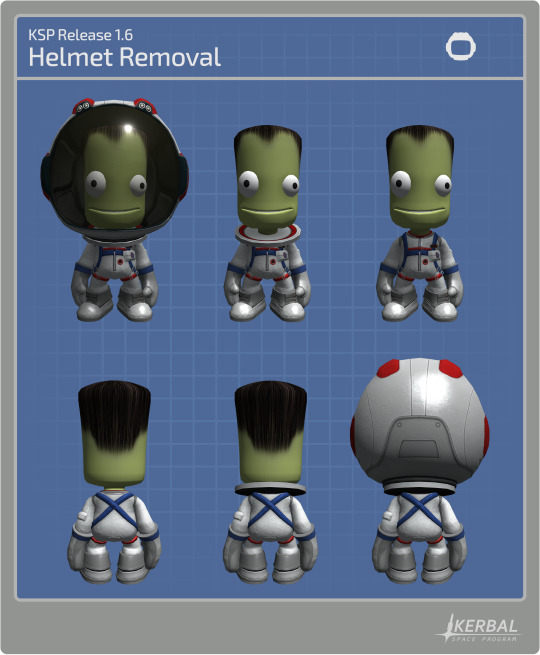
Click here to see an animated gif showcasing this feature.
And much more!
To learn more you can read the full Changelog here:
========================= v1.6.0 ===========================
1.6 Changelog - BaseGame ONLY (see below for MH changelog)
+++ Improvements
* DeltaV Readouts added to Stage Icons/Groups as well as DeltaV App. DeltaV available in Editor (VAB/SPH) and Flight scenes as well as a more detailed Debug menu option.
* Stock and mobile launch sites are now navigable in all game modes.
* Performance improvements for DV calculations that are used by Burn Indicator.
* Recommended UI Scale for the current resolution is now checked on the Settings Screen, working the same as the mini settings where a not recommended UI scale will turn the text red.
* Performance improvements for craft browser menus.
* Craft browser menus now check for craft compatibility.
* Added keyboard arrows navigation for main dialogs and menus. Highlight items with the directional arrows, Accept with the Enter and Space keys, and Cancel is Escape key.
* Generate reflections of the environment to be displayed on shiny parts.
* Improved part search in the editors to give more relevant results with short search terms.
* Adjusted shadows from The Sun to be more precise.
* Add new idle animations when the kerbal is standing in the ground.
* The command parts now have an option to change their 'forward' direction in the PAW.
* Kerbals helmet and neck ring can now be removed by right clicking the Kerbal while on EVA if it’s in a breathable atmosphere.
* Automatic warp to next maneuver node now takes the player to a margin before the start burn time rather than the node itself. Said margin can now be overridden from the default 1 minute via GameSettings.WARP_TO_MANNODE_MARGIN.
* Allow wheel spring and damper advanced tweakables to be set up to a value of 3.
+++ Localization
* Localize the phrase “Advanced Message App:” in the Mini-Settings dialog.
* Some Community feedback for localization strings applied.
+++ Parts
Updated Parts (reskinned):
* Mk2 Lander Can
* 48-7S Spark
* RE-L10 Poodle
* LV-909 Terrier
* FL-A10
* FL-A5
* ADTP-2-3
* Rockomax Brand Adapter
* Rockomax Brand Adapter 02
* TVR-200 Stack Bi-Coupler
* TVR-1180C MK1 Stack Tri-Coupler
* TVR-2160C Mk2 Stack Quad-Coupler
* TVR-200L Stack Bi-Adapter
* TVR-300L Stack Tri-Adapter
* TVR-400L Stack Quad-Adapter
* Small Nose Cone
* Aerodynamic Nose Cone
* Advanced Nose Cone - Type B
* Advanced Nose Cone - Type A
* Protective Rocket Nose Cone MK7
Color Variants:
* Mk2 Lander Can (New “Lander” and “Rover” color variants)
* 48-7S Spark (New “Shroud”, “Truss Mount” and “Bare” color variants)
* LV-909 Terrier (New “Shroud”, “Truss Mount” and “Bare” color variants)
* FL-A10 (New “White” and “Orange” color variants)
* FL-A5 (New “White” and “Orange” color variants)
* ADTP-2-3 (New “White”, “Black and White” and “Orange” color variants)
* Rockomax Brand Adapter (New “Black and White” and “Orange” color variants)
* Rockomax Brand Adapter 02 (New “Black and White” and “Orange” color variants)
* TVR-200 Stack Bi-Coupler (New “Black and White” and “Orange” color variants)
* TVR-1180C MK1 Stack Tri-Coupler (New “White”, “Dark” and “Orange” color variants)
* TVR-2160C Mk2 Stack Quad-Coupler (New “Black and White” and “Orange” color variants)
* TVR-200L Stack Bi-Adapter (New “Black and White” and “Orange” color variants)
* TVR-300L Stack Tri-Adapter (New “Black and White” and “Orange” color variants)
* TVR-400L Stack Quad-Adapter (New “Black and White” and “Orange” color variants)
* Aerodynamic Nose Cone (New “Black and White”, “Dark” and “White” color variants)
* Advanced Nose Cone - Type B (New “Black and White” and “White” and “Orange” color variants)
* Advanced Nose Cone - Type A (New “Black and White” and “White” and “Orange” color variants)
* Protective Rocket Nose Cone MK7 (New “Black and White”, “Orange” and “White” color variants)
Other Part changes:
* Fixed the normals maps on the Stayputnik.
* Fixed the normals maps on the Okto. * Fixed the visible texture seams on the Rockomax X series fuel tanks orange variant.
+++ Bugfixes
* Fix SAS on all probes in Sandbox and Science game modes to operate as per their config files. Game setting allows player to toggle SAS functionality on probes in these game modes.
* Fix handling of docking ports and multiple nuclear or ion engines for DV calculation used in Burn Indicator.
* Fix handling of stages with multiple engines and asparagus staging for DV calculation used in Burn Indicator.
* Fix flashing Burn Indicator and display of DV when vessel are prelaunch.
* Fix Vernor Engines now correctly use Liquid Fuel and Oxidizer on the Engineering report.
* Fix all engines now say "Engine stops under: xx%", instead of "Flameout under: xx%" on their part extended info tooltips.
* Fix Tutorials unable to proceed when the player has a part selected (attached to the mouse) in the editor scenes (VAB/SPH).
* Fix fuel being drained from tanks when fuel availability icon is double-clicked.
* Fix partially executed maneuver nodes gets the closest approach to the same orbit parameters.
* Fix double quotes in stock craft descriptions.
* Fix Contract/Parameters not updating for vessel ownership (such as rescue kerbal) when not in flight mode.
* Fix Drills can operate and generate ore only when deployed and proper surface contact.
* Fix Kerbal IVA crew mass calculation on crewable parts where user/mods have changed IVA crew mass to be > 0 (the default).
* Kerbal IVA crew mass now reported in DV and Engineers report mass totals in editor (VAB/SPH).
* Fix TVR-300, TVR-300L, Moving parts in symmetry works correctly.
* Removed unnecessary horizontal slider in the mini settings UI.
* Fix Summary window no longer appears empty when recovering a vessel with the UI scale at more than 150%, when in a non recommended UI Scale range.
* Fix flickering of fairings in editor scene.
* Further tweaked the sun behavior to stop it from dimming unnecessarily in the Jool Airbreak scenario.
* Fix Intermediate Construction tutorial does not require confirmation when loading the required vessel.
* Fix NRE is no longer generated when rockets crash on the Launchpad.
* Fixed a shader issue that caused the Mk16 parachute to become transparent when within Aero FX.
* Fix cost of fairings shells now is included with initial vessel load.
* Landing gear LY-01, LY-05, LY-10, LY-35, LY-60 and LY-99 can no longer be the first part when you are building a ship.
* Fix last part of interstage fairings not having correct variant applied when vessel is loaded.
* Assigned the correct category to the cfg of all engines.
* Limited the amount of undo/redo steps in the editors to prevent excessive use of memory while building large, complex vehicles. The amount of steps can be adjusted via GameSettings.EDITOR_UNDO_REDO_LIMIT
* Fix Vessel without name cannot be saved in the editor and no longer generates an error.
* Fix part hover highlighting no longers shows from inside IVA or Internal camera.
* Fix inverted interstage fairings not being able to activate when a decoupler below them has activated.
* Fix KSC building upgrade text padding on KSC Building marker UI for scroll bars.
* Fix potential NRE when completing an orbital survey.
* Fix Words no longer duplicate on contracts.
* Fix Burn Bar and Orbit stays the same when a new target is selected.
* Fix An NRE is no longer generated when trying to select the last save game in the save game menu after deleting previous saves.
+++ Mods
* Call OnWillBeCopied and OnWasCopied for children parts when their parent is copied in the editor scene.
* Variants can now disable animations and events.
* Alternative control point orientations can be configured on ModuleCommand.
* Kerbal Helmet check values are controllable via cfg using stock rules or an extra step by overriding code methods: CanSafelyRemoveHelmet, WillDieWithoutHelmet, CanEVAWithoutHelmet
* Kerbals now EVA with a set initial temperature equal to “room temperature” - I mean they were inside with no helmets - can be reverted via GameSettings.EVA_INHERIT_PART_TEMPERATURE
+++Miscellaneous
* Personal parachute kerbal unlock level requirement is accessible for modders in the traits.cfg file and the requirements have been updated to: 0xp for pilots, and 1 xp point for Engineers and Scientists.
* Stock craft have been revised so that they no longer use deprecated parts. The revised vessels are: Aeroequus , ComSat LX , Dynawing , GDLV3 , Ion-Powered Space Probe , Jumping Flea , Kerbal 1 , Kerbal 1.5 , Kerbal 2 , Kerbal X , Learstar A1 , Orbiter 1A , Orbiter One , PT Series Munsplorer , Rover + Skycrane , Science Jr , Slim Shuttle , Space Station Core , Super-Heavy Lander , Two-Stage Lander , Z-MAP Satellite Launch Kit ,Rocket-power VTOL , Satellite Launcher , Stratolauncher.
* Kerbals who board a command seat will make the command seat the vessel reference point only when no other part has control of the vessel.
* The flight camera near clip pane is automatically adjusted when in IVA to correctly display external visuals.
1.6 Changelog - Making History DLC ONLY
+++ Improvements
* Open mission menus now check for craft file compatibility.
+++ Localization
+++ Parts
* The following LFO engines were rebalanced : Wolfhound, Cheetah, Kodiak, Mastodon, Cub, Skiff, Bobcat.
* The following Engine Thrust Plates were rebalanced: EP-25, EP-37, EP-50
* The following Structural Tubes were rebalanced: T-25, T-37, T-50
+++ Bugfixes
* Removed the text “Not played yet” from the tutorial missions buttons in play missions dialog.
* Fix to remove the add button in the Modify Score and Change Score nodes if there are no more options left.
* Fix Kerbals now appear swimming in the correct position on the water when spawning.
* Fix undo function will no longer ignore copied nodes in mission builder.
* Fix handling of engine plates and self-decoupling parts for DV calculation used in Burn Indicator.
* Fix NRE in Mission builder : Changing the "Location" settings in the "Spawn Vessel" node with the described procedure does not generate an NRE.
* Fix Localization description of craft Valkshod 2 on trouble in the Void mission.
* Fix Localization name and description of craft Soy-Ooze 10 on Sally-Hut 1 mission.
* Fix Localization name and description of craft SWM-94 Communications Satellite on Trouble in the void mission.
* Fix Copying Spawn vessel nodes with specific crew creates nodes without crew so they are not cloned.
+++ Missions
+++Miscellaneous
==========================================================
Kerbal Space Program 1.6: To Vee or not To Vee is now available on Steam and will soon be available on GOG and other third party resellers. You will also be able to download it from the KSP Store if you already own the game.
Click here to enter the Grand Discussion Thread for this release.
Happy launchings!
PS: Ask and you shall receive xD
Oh... and if you like, you can download wallpapers of the To Vee or not To Vee art here:
1080x1920p (Most Phones)
1080x2220p (Galaxy S9)
1125x2436p (iPhone X)
Desktop 1920x1080p
Desktop 2048x1080p
Desktop 2560x1440p
28 notes
·
View notes
Text
How to be an astronaut
New Post has been published on https://thedigitalinsider.com/how-to-be-an-astronaut/
How to be an astronaut


The first question a student asked Warren “Woody” Hoburg ’08 during his visit to MIT’s Department of Aeronautics and Astronautics (AeroAstro) this November was: “It seems like there’s no real way to know if being an astronaut is something you could really do. Are there any activities we can try out and see if astronaut-related things are something we might want to do?”
Hoburg’s response: There is no one path to space.
“If you look at all the classes of astronauts, there are all sorts of life paths that lead people to the astronaut corps. Do the things that are fun and exciting — work on things you’re excited to do just because it’s fulfilling in and of itself, not because of where it might lead,” he told a room full of Course 16 students.
Hoburg was the only faculty member among his peers in NASA’s Astronaut Class 22, for example. His own CV includes outdoor sports, computer science and robotics, EMT and search and rescue service, design optimization research, and flying airplanes.
In a two-day visit to the department that included a keynote lecture as well as fireside chats and Q&As with undergraduates and grad students, Hoburg shared his personal journey to becoming an astronaut, lessons and observations from his time aboard the International Space Station, and his excitement for what’s next in space exploration.
Woody Hoburg: From MIT to ISS Video: Department of Aeronautics and Astronautics
From MIT to ISS
For Hoburg, the path that led him first to MIT and eventually to the International Space Station wasn’t straightforward, or focused on a specific goal. From his aerospace studies at MIT, he was torn between going to grad school or getting a job in industry. He decided to pursue computer science in grad school, and from there wasn’t sure if he should stay in academia, join a startup, or join the U.S. Air Force. It was late in grad school when his research started going well that he decided to stick with it, and that decision brought him back to MIT in 2014 as an assistant professor leading a research group in AeroAstro.
He had more or less forgotten his childhood dream of becoming an astronaut. “Not in a bad way,” he clarifies, “just there were other things consuming my time and interest.” But then, a friend suggested they submit applications for the NASA Astronaut Candidate Program. “I remembered that when I was a kid I did think that would just be the coolest job, so I applied. I never thought I’d actually get accepted.”
Performing in an operational environment
Hoburg credits his time at MIT with nurturing a love of adventure and pursuing new ideas and passions. “Everyone here was awesome academically, that was a given. But it seemed like everyone also had a wild unique interest, and I loved that about this community.” As an undergraduate Hoburg remembers rushing through his P-sets so he could go off rock-climbing and skiing for the weekend.
The MIT Alpine Ski team was his first experience on a tight-knit, mission focused team, which has become a core part of his personal and professional ethos. Before starting grad school at the University of California at Berkeley he took a year off to be an EMT, and he spent his summers in California on the Yosemite Search and Rescue team.
“That was my first experience doing what I would call real operational stuff, getting called out on a mission to help someone, working with a high-performing team in an austere environment,” he said. “A lot of the civilians who get selected at NASA have something operational in their background, in addition to their technical expertise. I think search and rescue ultimately helped me with my astronaut application, but I don’t know of anyone who had gone that route before me. It did help me grow into a strong operator — but at the time I just wanted to be out in the mountains responding to emergencies.”
This theme of operational capacity emerged throughout Hoburg’s talks and Q&As. He noted that astronaut candidates tend to be natural team players, and the two-plus years of training prepare them to approach every situation with trust and confidence. A comfort level with versatility is critical for an astronaut: they have to fly and dock the spacecraft, operate and perform maintenance on the ISS itself, perform spacewalks, and of course get home again. All of this is in service of their primary mission aboard the ISS:
“We’re just operators up there,” says Hoburg, “we work on literally hundreds of different experiments, while the PIs are on the ground. The science work is definitely the purpose of why we’re there. That place is busy — we are working 12 hour days a lot of the time.”
Moon, Mars, and beyond
Many of the students’ questions and Hoburg’s responses were practical, perhaps unsurprisingly in a department full of aerospace engineers. His ISS wish list — free-flying robots to help with holding and carrying; robotic cameras to better document their experiments and other pursuits onboard; improved automation and manual control interfaces in launch, flight, and docking; better solutions to the challenges of stowage and organization — may be the very projects that this generation of engineers tackles.
Hoburg also shared some broader insights from his career as an astronaut so far, including his personal reflection on the famously profound experience of looking at the Earth from space:
“Earth actually looks really big from the ISS,” he said, adding that he would love to see it from the far-away perspective of the Apollo 8 lunar mission. “The overpowering feeling for me was looking at the atmosphere. When you do a spacewalk, it’s pretty in your face that you’re in a vacuum. There is just pure death all around you. And when you look at the Earth, you see how it’s protected by this very, very thin layer.”
Hoburg is enthusiastic for NASA’s upcoming return to the moon, and for the growing commercialization of low Earth orbit that’s allowing NASA to focus on “a transition period beyond low Earth orbit.” He’s keen to help with the lunar missions that will help prepare the next generations of spacefarers to get to Mars.
Above all, he’s excited about the possibilities ahead. “Looking back at the 20th century, I think the moon landing was truly one of our crowning achievements. So part of it is purely inspirational, that spirit of adventure and exploration. Putting humans farther out into space is an audacious goal, worth our time and effort.”
#Advice#Aeronautical and astronautical engineering#aeronautics#aerospace#air#air force#airplanes#Alumni/ae#amp#applications#approach#astronauts#atmosphere#automation#background#Cameras#career#Careers#classes#Community#computer#Computer Science#course#CV#Design#earth#engineers#Environment#Faculty#flight
0 notes
Text
Histoires de planètes
Bibliography
Histoires de planètes
ANTHOLOGIE
Textes réunis par Jacques GOIMARD & Demètre IOAKIMIDIS & Gérard KLEIN
Science Fiction - Cycle : La Grande anthologie de la science-fiction vol. 7
Illustration de Pierre FAUCHEUX (1st cover - 1975) & Éric SEIGAUD (2nd cover - 1985)
LIVRE DE POCHE, coll. La Grande anthologie de la science fiction n° 3769, 1er trimestre 1975
448 pages, catégorie/prix : 4, ISBN : 2-253-00723-4
Autres éditions : LIVRE DE POCHE, 1976, 1977, 1985, 1997
Stories:
1 - Jacques GOIMARD & Demètre IOAKIMIDIS & Gérard KLEIN, Introduction à l’anthologie, pages 7 à 14, Introduction (lire ce texte en ligne)
2 - Demètre IOAKIMIDIS, Préface, pages 15 à 32, Préface
3 - Jack VANCE, Le Diable de la colline du salut (The Devil on Salvation Bluff), pages 33 à 64, trad. Simone HILLING
4 - Michael SHAARA, La Planète Greenville (Greenville’s planet), pages 65 à 83
5 - Ian WILLIAMSON, La Nef engloutie (Chemical plant), pages 85 à 115, trad. Paul HEBERT
6 - Robert SHECKLEY, Les Monstres (The Monsters), pages 117 à 131, trad. Alain DORÉMIEUX
7 - Chad OLIVER, L’Objet (Artifact), pages 133 à 163, trad. Bruno MARTIN
8 - Lester DEL REY, Stabilité (Stability), pages 165 à 188, trad. Michel RIVELIN
9 - Roger DEE, Le Robinson de l’espace (Man Friday), pages 189 à 224
10 - James Henry SCHMITZ, Le Garde (Caretaker), pages 225 à 244, trad. Arlette ROSENBLUM
11 - Alfred Elton VAN VOGT, Le Village enchanté (The Enchanted Village/The Sands of Mars), pages 245 à 267, trad. Richard CHOMET
12 - Robert A. HEINLEIN, Oiseau de passage (The Menace from Earth), pages 269 à 309, trad. Roger DURAND
13 - Fritz LEIBER, La Forêt enchantée (The Enchanted Forest), pages 311 à 340
14 - Robert F. YOUNG, La Déesse de granit (Goddess in Granite), pages 341 à 373, trad. Catherine GRÉGOIRE
15 - Philip José FARMER, Attitudes (Attitudes), pages 375 à 404
16 - Idris SEABRIGHT, Se battre et mourir (Brightness falls from the air), pages 405 à 415
17 - Edmond HAMILTON, La Planète morte (The Dead Planet), pages 417 à 434, trad. Bruno MARTIN
18 - Dictionnaire des auteurs, pages 435 à 443, Dictionnaire d’auteurs
Data taken from the NooSFere database (https://www.noosfere.org/icarus/livres/EditionsLivre.asp?numitem=1870)
Histoires de Planètes (or Stories of planets) is a collection of small stories and novella regrouped around a common thematic, in this case, planets. I picked up that book while I was a teenager back in high school. I remember, at that time, I was reading every story I could find that were labelled as science fiction, at my local library. Although, I was enjoying what I was reading most of the time, it’s only now I realized that I was taking every science-fiction story as some extra flavoured adventure stories. Today, I recognized that in most cases, I never really quite understood what I was reading … which means that I have a much better appreciation of what I’m currently reading now, than 40 years ago.
Of the stories collected in this book, here those that impressed me and the reasons why:
Le Diable de la colline du salut (The Devil on Salvation Bluff–1952) by Jack Vance : I didn’t like this story at first; but now I grasped its importance. The story is about human settlers trying to adapt to their new colony which is orbiting around multiple suns. I did not understand then the true meaning of this story until I went to Afghanistan. Only then did I remember this story and everything became clear to me. As I came off the plane in Kandahar, I was hit by the hostile conditions of the place: The stench in the air, the blazing heat of 38℃ at 08h00 am, the noises and, of course, the military conditions… I was a stranger in a very alien land! The psychological shock was quite evident and it took me about 6 weeks to adapt to the local conditions (and don’t get me starting on the jet lag). What helped me were the sounds the birds were making which were the same as at home. Then it hit me like a train: the birds (sparrow) were the same as the ones at home because those at home WERE IMPORTED BY THE FIRST EUROPEAN COLONIST who came to North America. They brought those birds with them because it reminded them of the home they left … their old life. Those sparrows served as psychological support for the colonist to adapt to their new environment; not realizing the ecological disaster they nearly created. In the story the colonist finally accepted their new world once their symbol of normality (the central clock) got destroyed.
In retrospect, Jack Vance, here, raised up the issue of mankind adapting to their new environment and the psychological stress they will face. Today, we are perfectly adapted to Earth and it is quite easy to figure out what is good for us and what could constitute a threat. On an alien world, where everything will be different (The air, the light, the day time, the flora and fauna), how will the colonist know what is good and what is not? If you heard a cat purring, you know there is no threat … but if you hear the roaring of a lion or the howling of a wolf, notice your heart will start racing immediately. This why this story is a good one for any sci-fi setting (2300 AD or any other).
La Planète Greenville (Greenville’s planet - 1952), by Michael Shaara: I remember this story caused me a shock when I read it due to its lack of a happy ending. Because I read it while I was a teenager, it was my first exposure to this kind of story. And to be frank, I didn’t know how to handle it. The story is about the exploration of an uninhabited planet covered almost entirely by water aside two very tiny islands. The moral of the story is because a planet appeared to be uninhabited, it might not be the case … and the local inhabitant might not be where you’ll expect to find them or may not even share the same environment as you are.
La Nef engloutie (Chemical plant - 1950), by Ian Williamson : I really enjoyed this story … although the French translation of the title has nothing to do with the original text … but in retrospect, translating the original title into French would not have made sense either. The story is about a search and rescue operation for a starship that has crashed on an unexplored planet. Their only clue: the ship attempted to crash land near a red lake. I won’t say more as you need to read this story to better appreciate it. If you are into sci-fi RPG, this could be a great plot for a campaign either 2300 AD, Traveller or any other similar setting…
Les Monstres (The Monsters - 1953) by Robert SHECKLEY: A sentient alien species attempts to deal with their first contact with humans. One thing I remember of this story is that some biological imperatives might be at the core of cultural behaviours or way of thinking … or both. This is an important clue if you want to write about an alien species. When I read that story for the first time, I thought the whole concept as quite stupid but now, after I gained experience on other cultures (through my travels) I think that Robert Sheckley was bang on! The biological imperative of any sentient species will have a direct impact on their cultures and way of thinking … to fail in understanding this will result in conflict that will make the North American Natives’ genocide look like a garden party.
Le Robinson de l’espace (Man Friday - 1954), by - Roger DEE: This story started as its name indicate, as a sci-fi take on the classic Robinson Crusoe’s story. However, as you move forward into the narrative, you’ll start to realize that in the relationship between Robinson and Friday turned out to be not what you expected to be at the beginning. I must say that even today, this is a twist that I that I haven’t seen in use in many stories.
Morale of the story, never assume that mankind is the most advanced or intelligent species when we will encounter another sentient being… Especially if that alien “look” more primitive than us.
Le Village enchanté (The Enchanted Village/The Sands of Mars - 1950), by Alfred Elton VAN VOGT: An astronaut, Bill Jenner, is the only survivor of a ship that crashed on Mars. After many days and seeing is resources in food and water dry up, he came upon a small Martian village on the edge of the desert (1950, remember). After he reached the location, nearly dead from hunger and thirst, he quickly realizes the village IS trying to help him but his biology was too different from the ones whom the village was built for … thus forcing him to adapt … adapt???
What I liked about this story is the fact that A.E. Van Vogt had a genial idea to show us that what we take for granted or logical might not be so. If we build stuff to fit our needs and logic, an alien civilization will indubitably do so to fit THEIR needs … not ours … so let’s not assume that what can be applied to us will also be the same for them.
Oiseau de passage (The Menace from Earth) by Robert A. HEINLEIN, The story is set in the near future when the Moon is colonized with people living in underground cities. The “menace” of the title is a glamorous woman tourist who visits the Moon colony. She is assigned a young guide named Holly, a 15-year-old girl and aspiring starship designer who is the first-person narrator. Holly’s best friend Jeff develops a crush on the “groundhog” visitor, Ariel. As Jeff spends more time with Ariel, Holly becomes jealous and begins to doubt his friendship (source Wikipedia).
I could not have written this any better than this. What I liked about this story is the way Heinlein described the Lunar colonies … not as advanced outposts from mankind but as a regular place where people have adapted and used the characteristic of their environment to create new form of entertainment and culture. I really enjoyed the detail he placed on how to wear a space suit and the little details you have to think of just to be comfortable in it. The fact that it was written from a woman’s perspective is a plus.
La Déesse de granit (Goddess in Granite - 1957) by Robert F. YOUNG : I must credit Robert F. to have written a story in which I still remember the emotion it transcended in such a way that I still remember it forty years after I’ve read it. Only because of the location in which the story takes place was the reason why this short novella ended up in this collection … the rest is more of an internal journey than a sci-fi story. Somewhere, on a small planet, a civilization has sculpted an island in the shape of a woman. A masterpiece of craft whose hair was made by a forest and the eyes, two perfect lakes (artificial?).
Today, I realize this story would have been impossible since only a human would have created such a sculpture and not a mysterious, long dead, alien civilization. Yet, the idea of some kind of macro engineering for the purpose of art … is an interesting idea. Indeed, why always assume that ruins and artefacts were created for the sole purpose of religion, habitation and … maybe some type of industrial process? Art in itself can become a purpose and the human is probably not the only one who has some.
La Planète morte (The Dead Planet - 1970), by Edmond Hamilton : This story is probably the main inspiration for the story I’m currently working on. At the edge of the galaxy, a damaged explorer ship is forced to crash land on a dead planet orbiting an agonizing star. Miraculously, they survived but their ship was severely damaged, stranding them there. As the crew started looking for some mineral deposit to help them in their repairs, they stumbled, instead, upon a lifeless domed city under the ice. Who build it? When was it built? But more importantly, what kind of security system was left behind?
This story impressed me at the time because of the concept it brought to me: Up to this point, when I thought of ruins and archaeology, I immediately thought of old stones and primitive technologies (thanks in part to Indiana Jones) … but what about an advanced civilization? This story made me realize that if a civilization had the power to create self-repair machines powered by a near limitless energy sources, there was a chance their technology and creation might still be around even if their creators were gone since the dawn of time.
Also, I did not realize immediately … in fact I only found out 2015 or so (and I read that book back in the ’80s); but Edmond Hamilton was also one of the writers of one of my most beloved childhood heroes: The Capitaine Flam (Originally Capt Future). Of course, how could I’ve guessed at the time, that the cartoon by TOE ANIMATION (Japan), I was watching was from the same person? Only through the lens of the internet I was able to make the connection. In retrospect, learning this only made me appreciate the serial Capt Future even more.
In conclusion, this anthology confirmed that even old stories that, in many ways, could be considerate as “obsolete,” could still hold sparks of genius if someone cares to take a second look without any prejudice. Not all of the stories were good, or aged well, but each one of them has the merit to ask some very tough questions that warranted some explorations. Which, in fact, is why I keep those stories around … as they could always use a second look.
1 note
·
View note
Text
NASA Communications and Navigation in 2021: Top 10 Iconic Moments
Did you know NASA uses global networks of antennas and relay satellites to talk with astronauts and spacecraft?
Our space communications and navigation community has had an incredible year! From supporting science and exploration missions to developing cutting-edge tech, here are some of the team’s most impactful accomplishments of 2021.

1. We launched a revolutionary tech demo, the Laser Communications Relay Demonstration, which will showcase the benefits of using infrared laser links to send data from space. Laser communications systems can offer 10 to 100 times more data per second than traditional radio! You can learn more about the mission in a new season of our podcast, The Invisible Network.
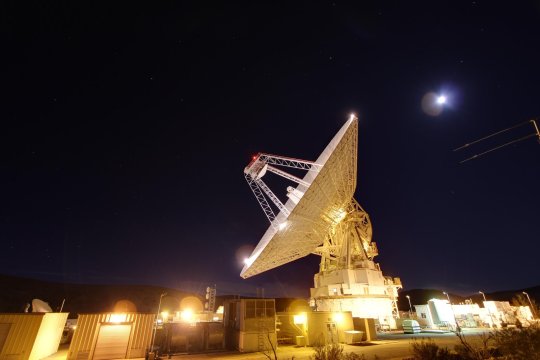
2. Planetary radars observed their 1,000th near-Earth asteroid since 1968! Our Deep Space Network plays a critical role in detecting near-Earth asteroids, using radar to spot them. These radar detections help definitively predict if an asteroid is going to hit Earth, or if it’s just going to pass close by.

3. We used lessons learned developing communications services for the Moon to address digital inequality on Earth. Folks at our Glenn Research Center in Cleveland examined how lunar network approaches could address technical challenges to Wi-Fi connectivity in their local community.

4. Our Search and Rescue office participated in dress rehearsals for the Artemis I mission to the Moon! They tested critical distress technologies that will help locate Artemis astronauts in the unlikely event they need to leave the Orion capsule and enter open water before recovery teams can reach them.

5. With high international participation, we hosted a virtual workshop on cognitive communications at our Glenn Research Center in Cleveland, Ohio. Cognitive communications employs artificial intelligence and machine learning in radio systems to provide a host of benefits to user missions!
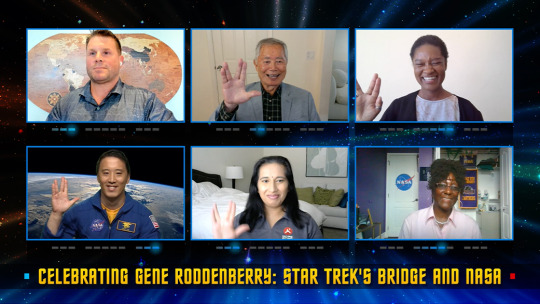
6. We celebrated the 100th birthday of the creator of Star Trek, the late Gene Roddenberry. The event featured Roddenberry’s son Rod, NASA administrator Bill Nelson, and Star Trek actor George Takei. Following the program, our Deep Space Network broadcast Gene’s 1976 remarks on diversity and inclusion toward star system 40 Eridani — home to the planet Vulcan in Star Trek lore. Signals from the broadcast will arrive there in 16.5 years.

7. We worked with the aerospace community to refine our LunaNet architecture for lunar communications and navigation services! LunaNet will leverage innovative networking techniques, standards, and an extensible framework to rapidly expand network capabilities at the Moon for Artemis. This framework will allow industry, academia, and international partners to build and operate LunaNet nodes alongside us.
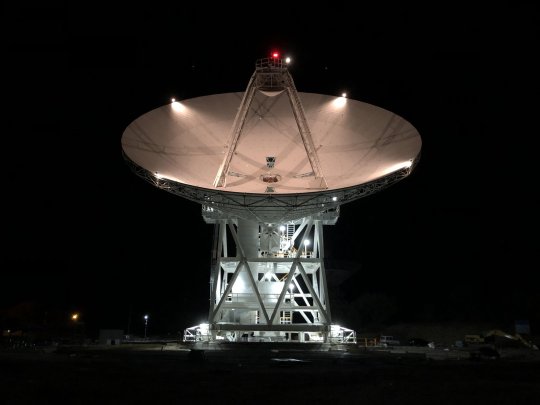
8. Our Deep Space Network welcomed a brand new satellite dish into the family! Called Deep Space Station 56, or DSS-56, the 112-foot-wide (34-meter) dish is now online and ready to communicate for a variety of uses, including missions at the Moon and Mars.

9. Our Near Space Network engaged with over 200 commercial aerospace companies! They’re working toward a new paradigm where NASA missions near Earth can rely on a blend of government and commercial space communications infrastructure to meet their needs.
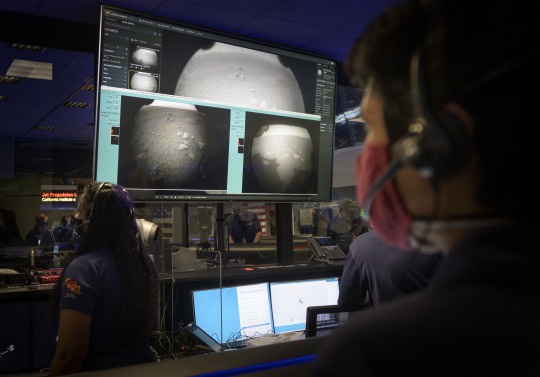
10. Our 10th item on the list isn’t a single moment, but the continued support our communications networks provided missions throughout 2021. Whether it was a Commercial Crew mission to the International Space Station or the Perseverance Rover’s touchdown on Mars, our Near Space Network and Deep Space Network were there to empower mission success! Make sure to follow us on Tumblr for your regular dose of space!
853 notes
·
View notes